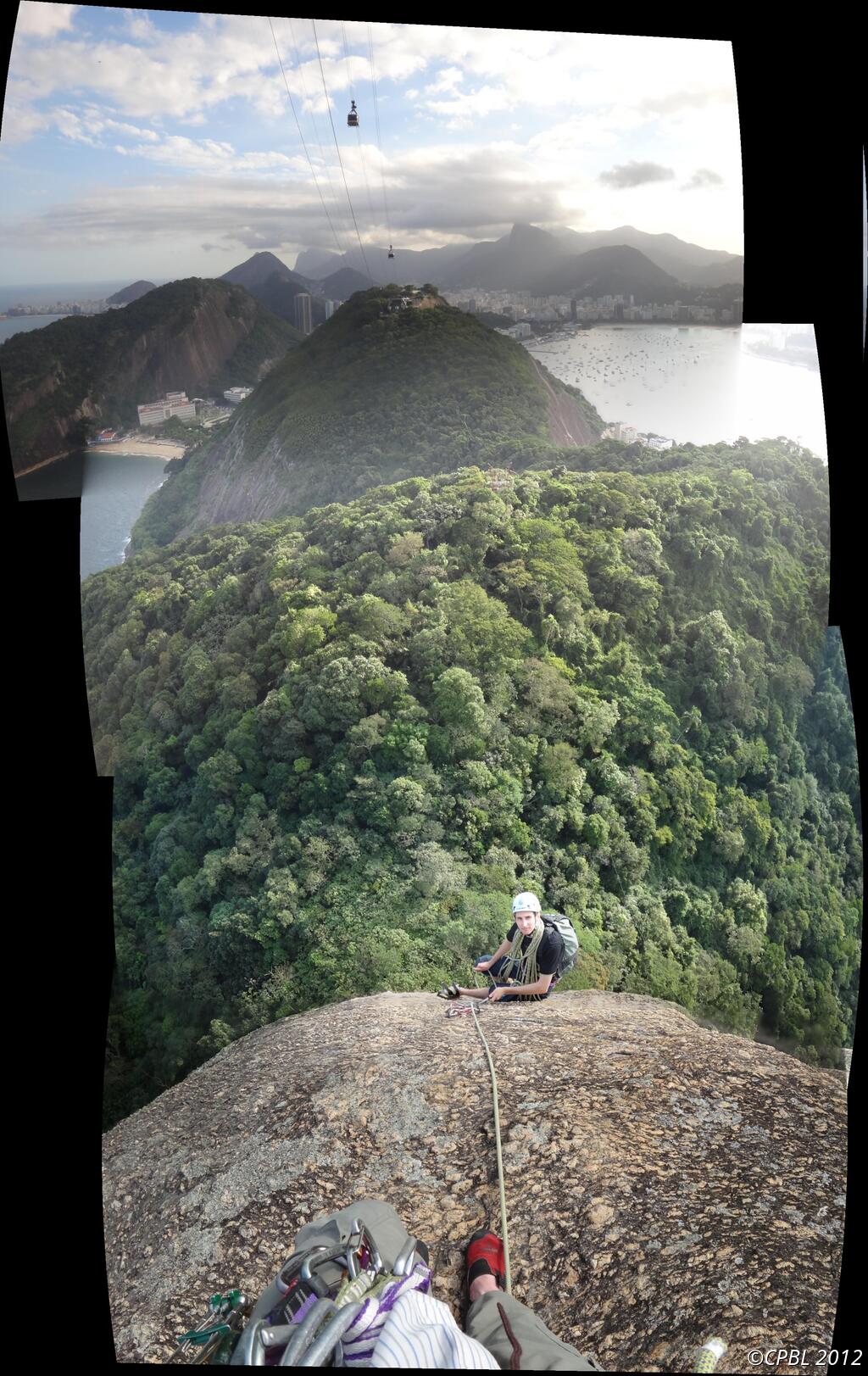| Click on images to see medium size. Click on title to maximise this page. |
All images © CPBL unless otherwise stated |

| | After the Rio+20 UNCSD "Earth Summit", Emmanuel, |
|
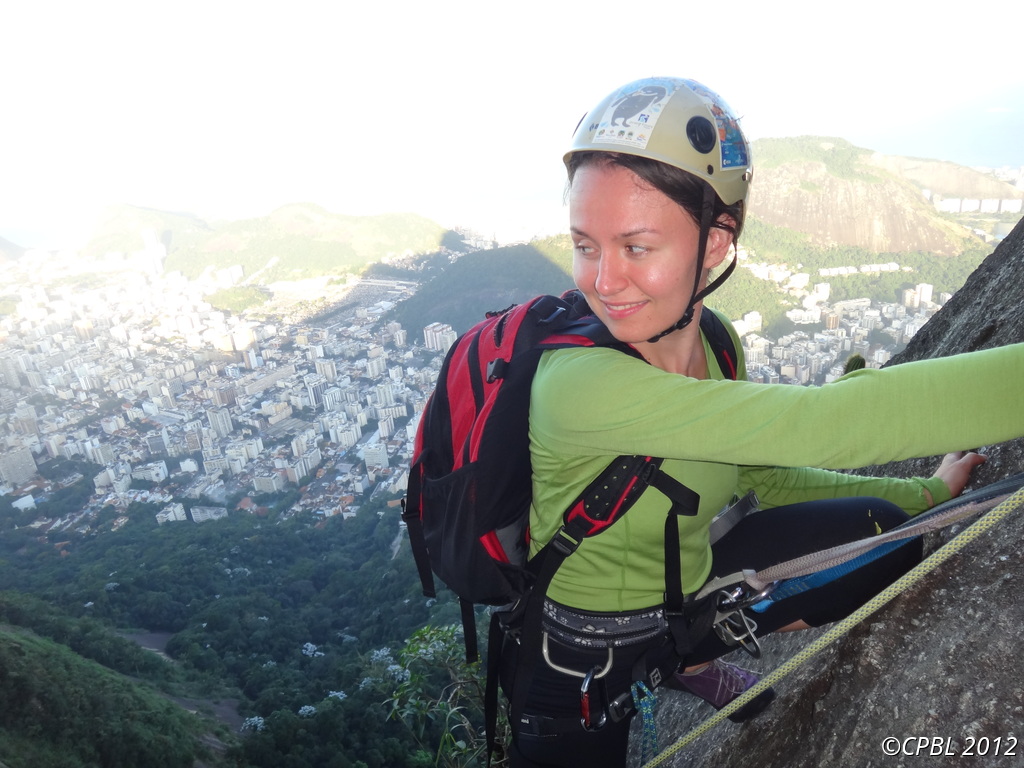
| | Aleksandra, and I took a few days to sample the vertical side of Rio. We used the outstanding bus system for our daily commute from Barra da Tijuca to the climbing around Urca or Corcovado. |
|
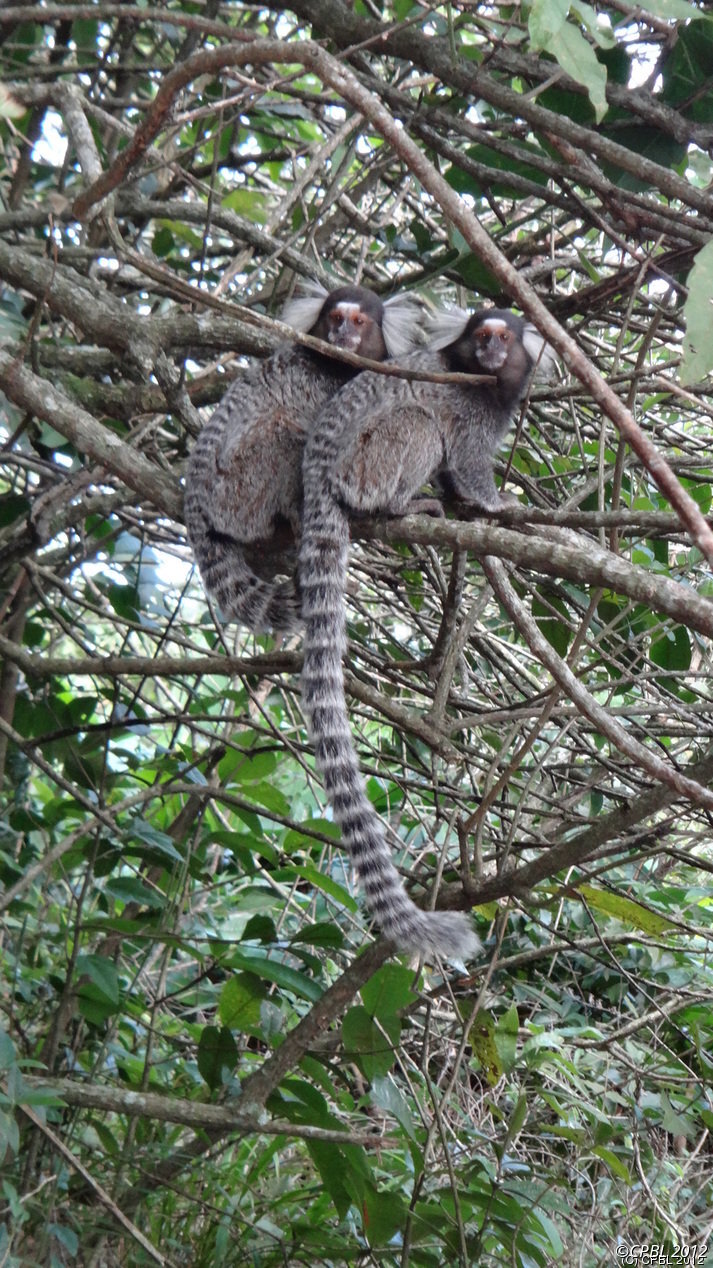
| | Our first trip was on a version of the Italian route on the Pão de Açúcar, which goes right up under the cable car. Some sagüis (tamarins) were waiting to greet Emmanuel and me at the base. |
|

| | Here's Marcello, leading a neighbouring (harder) route. He gave us beta for what else to climb in the area. |
|
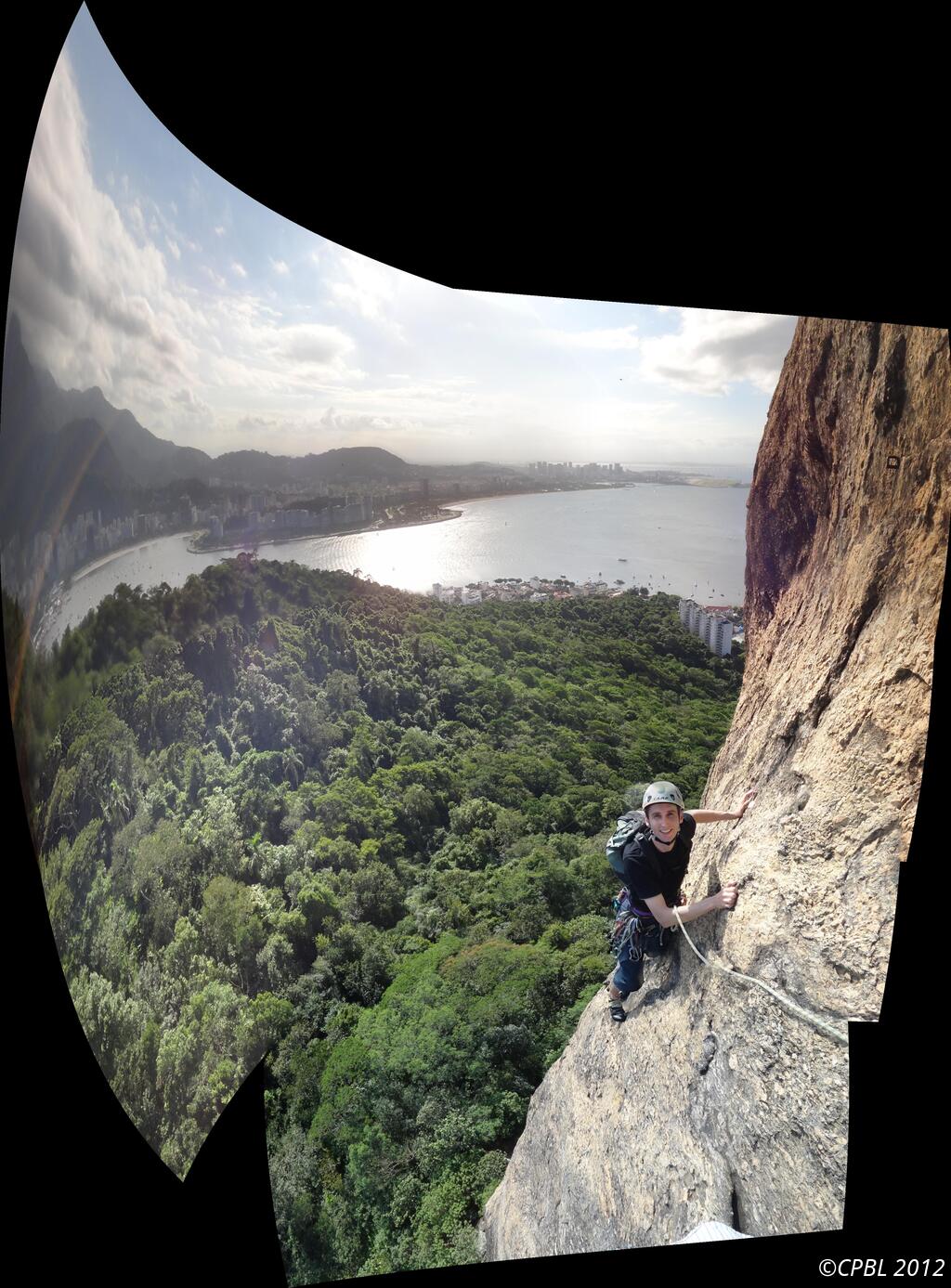
| | Emmanuel finishing the first pitch. |
|
|

| | Rio is spectacular. Greenpeace's sailing ship is visible, leaving after Rio+20. (CLICK IMAGES TO ZOOM) |
|
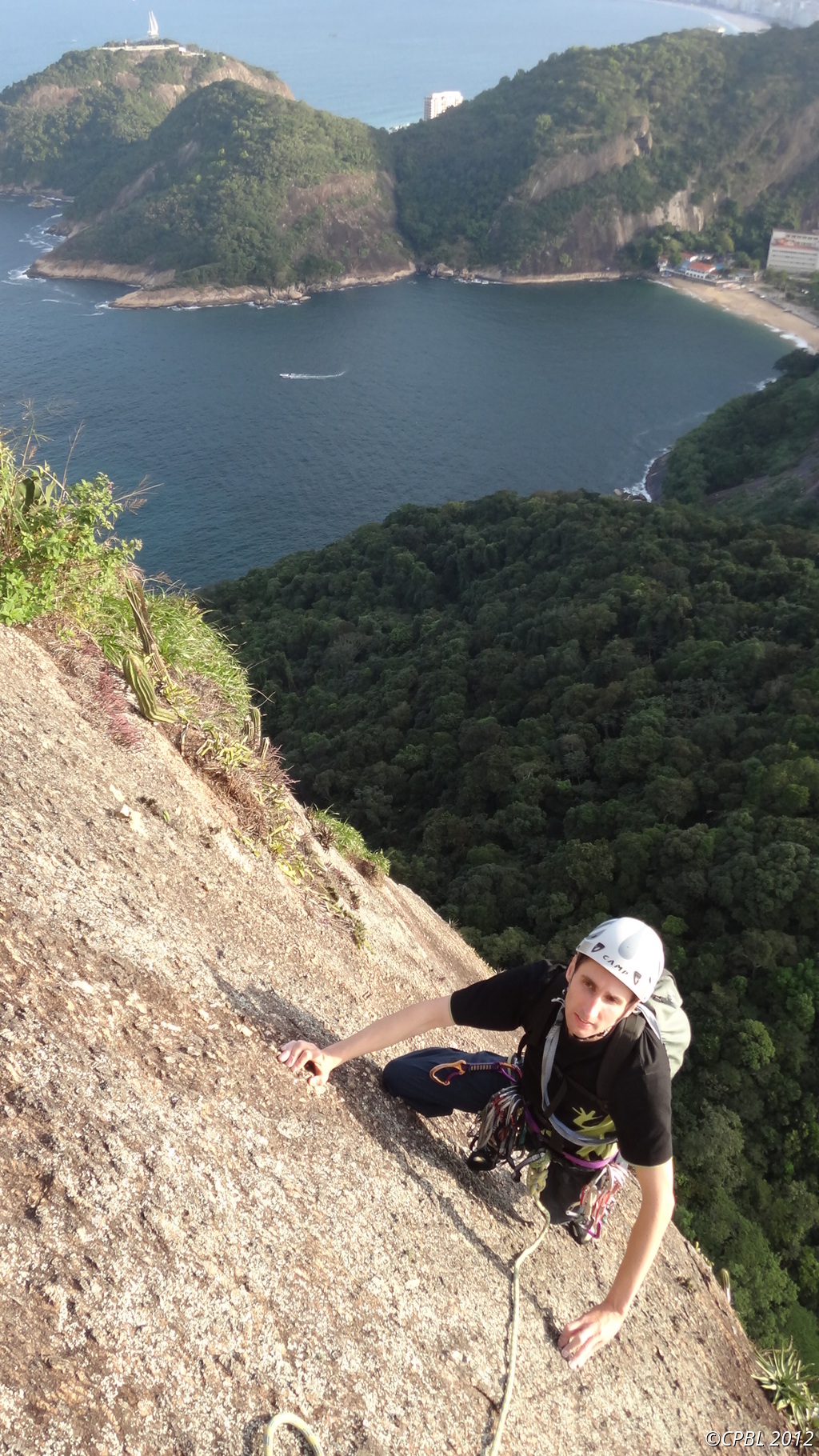
| | The rock is all gneiss, often with large phenocrysts which provide many of the holds on slab and face, but of course there are some corner and sometimes crack systems too. |
|
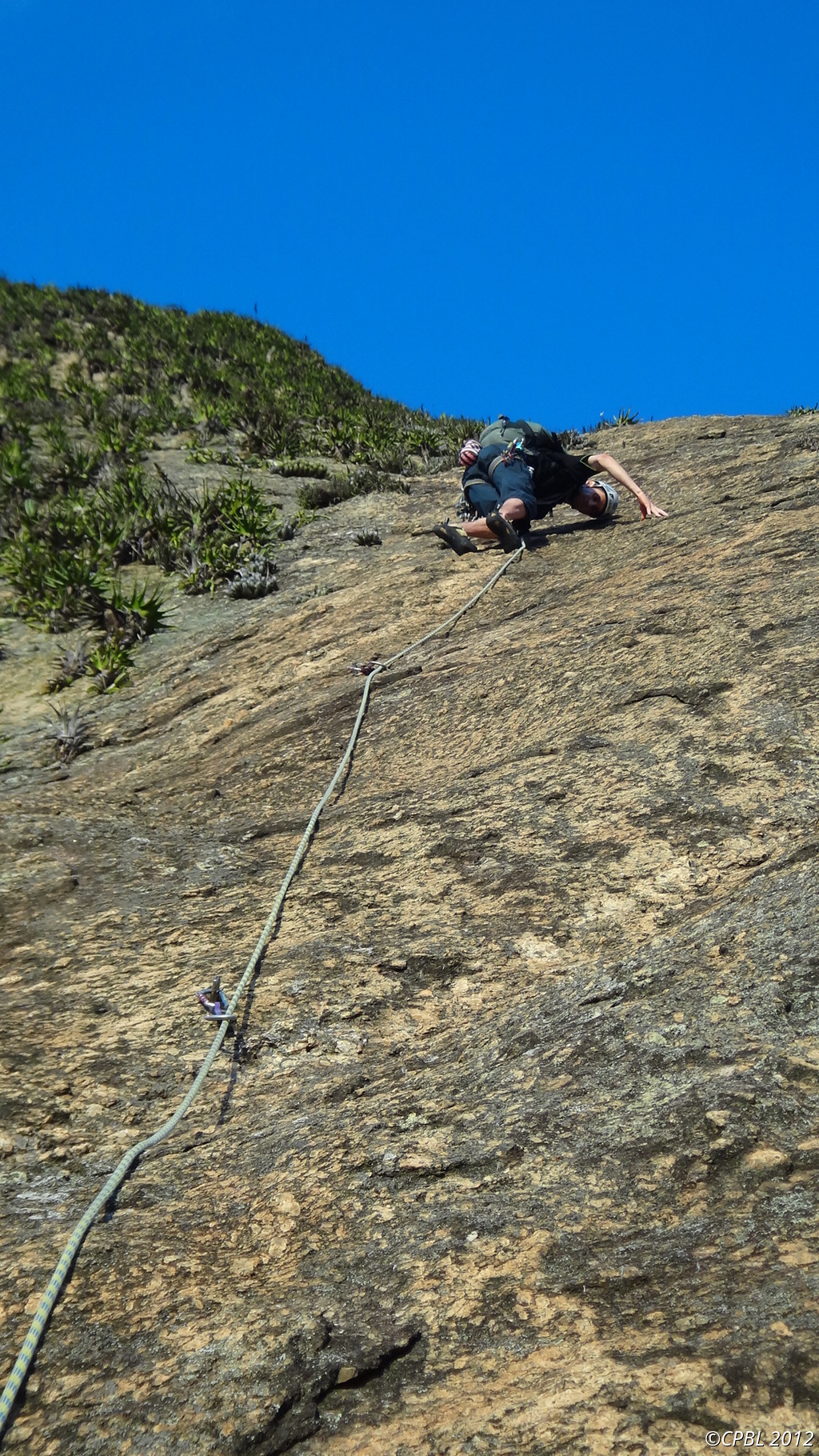
| | And if you like climbing phenocrysts, the penultimate two pitches (link them!) that we took (left-most option?) are stunning. |
|
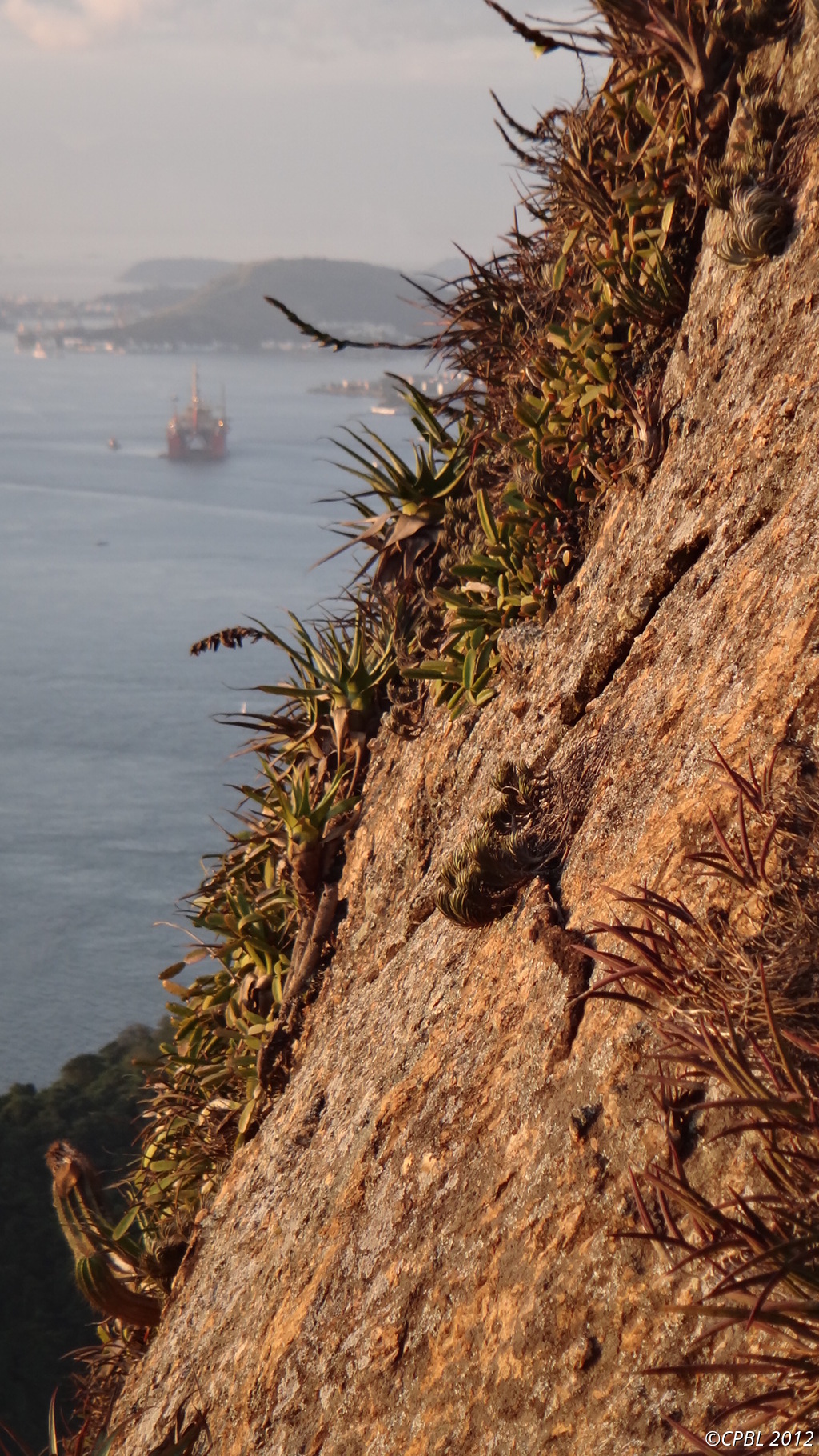
| | To the side of this route, the unscrubbed rock is beautifully vegetated. (Yes, oil rigs in the background). |
|
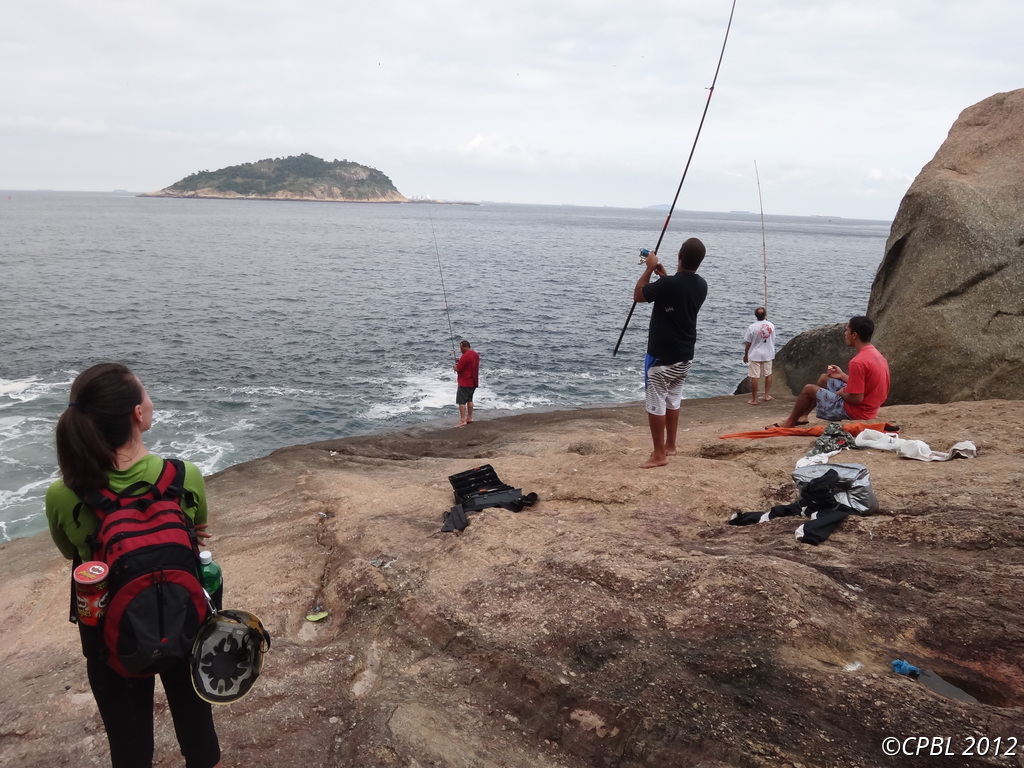
| | The next day, we investigated some shorter routes and bouldering beneath the south face of Urca / Sugarloaf. |
|

| | Top-rope bouldering. |
|
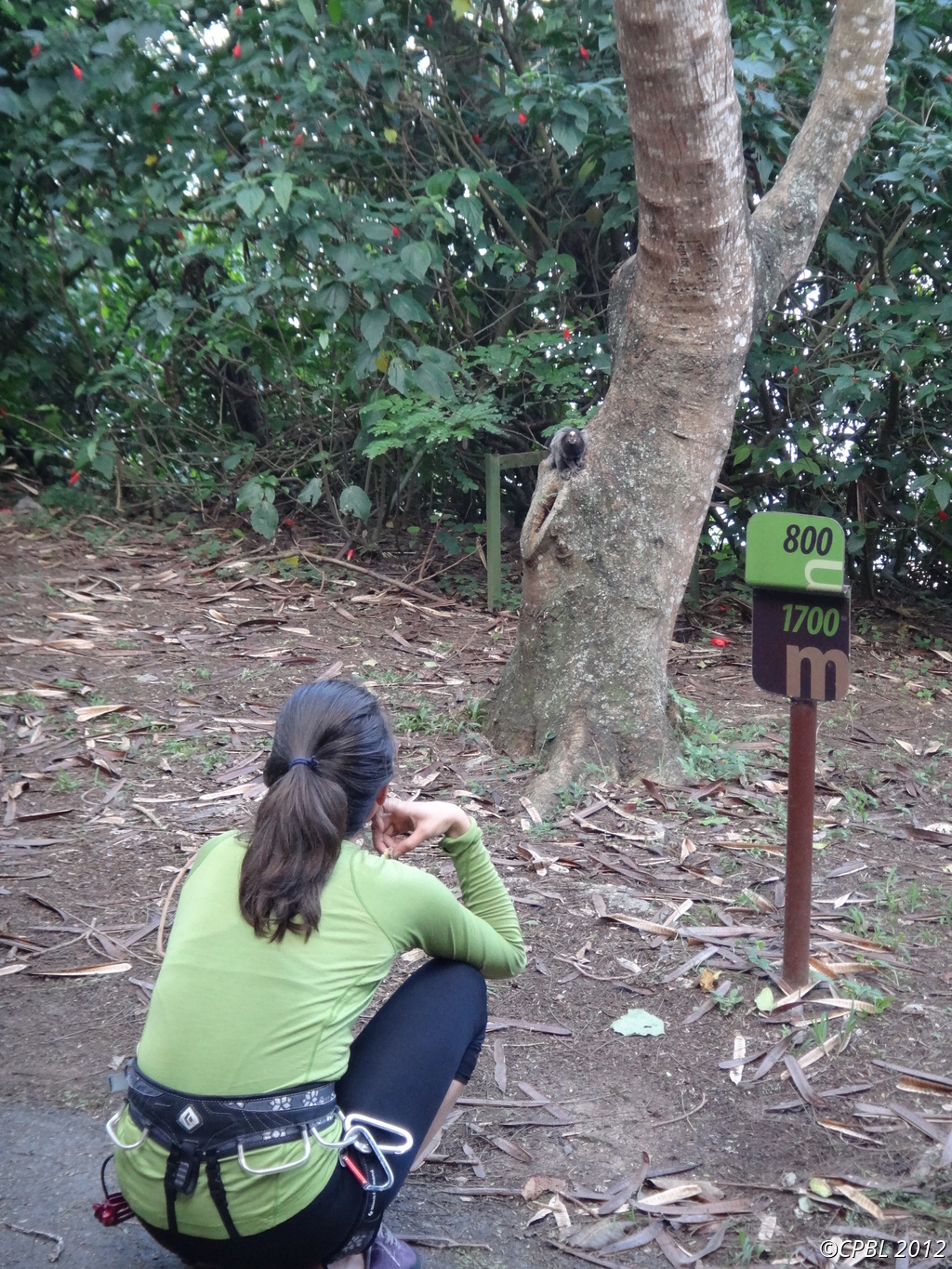
| | Aleksandra (just) resists the temptation to feed the tamarins, and they (just) resist the temptation to bite her hand. |
|
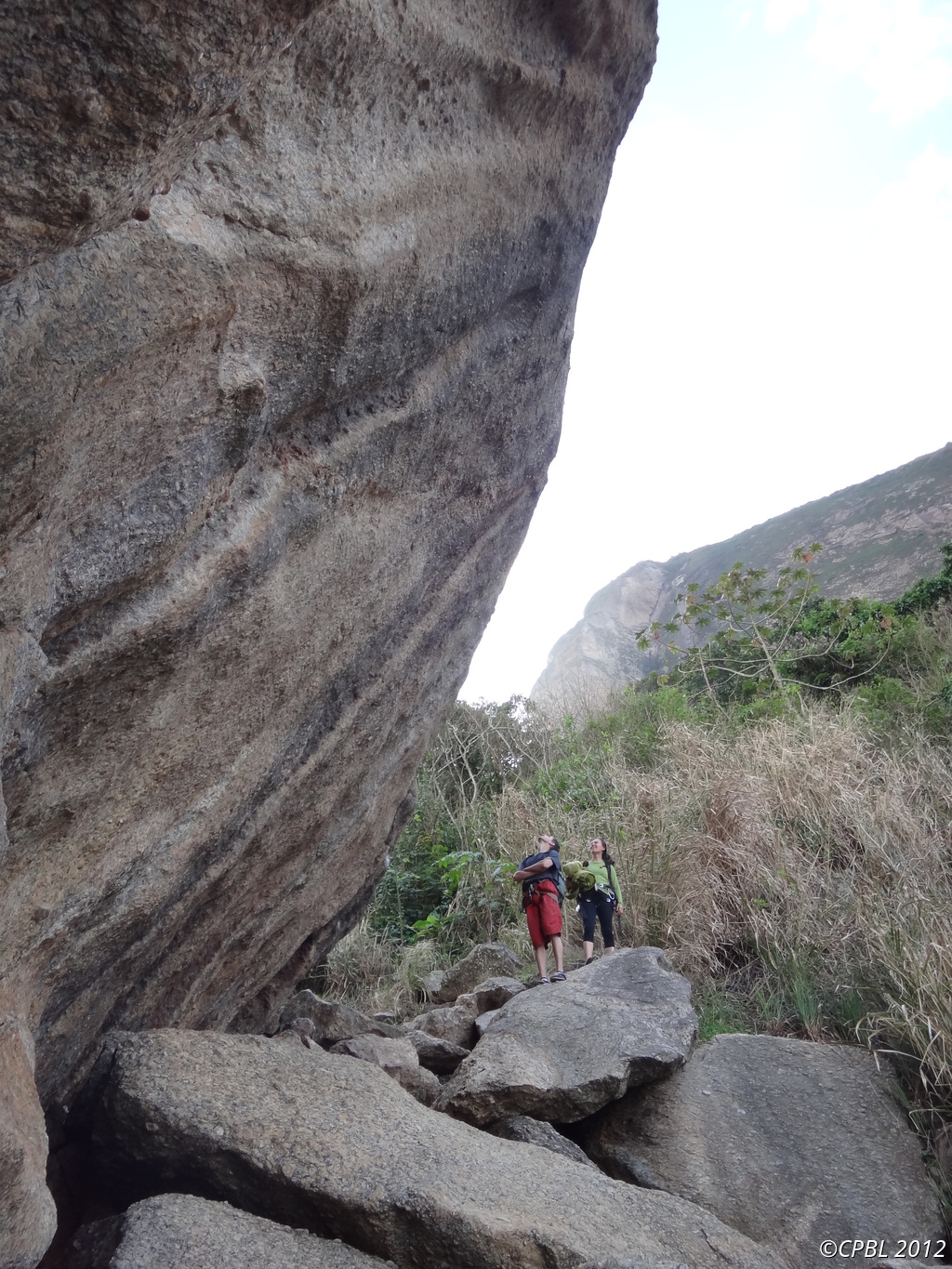
| | Yeah... that goes, at 5.13c. |
|

| | Emmanuel sailed up this on lead, but our tips were trashed already and we took the next day off to slackline (etc). [Photo: Aleksandra Nasteska] |
|

| | Dirtbag climbers walk all the way from the metro to the Cristo Redentor statue, rather than paying for the teleferico. |
|
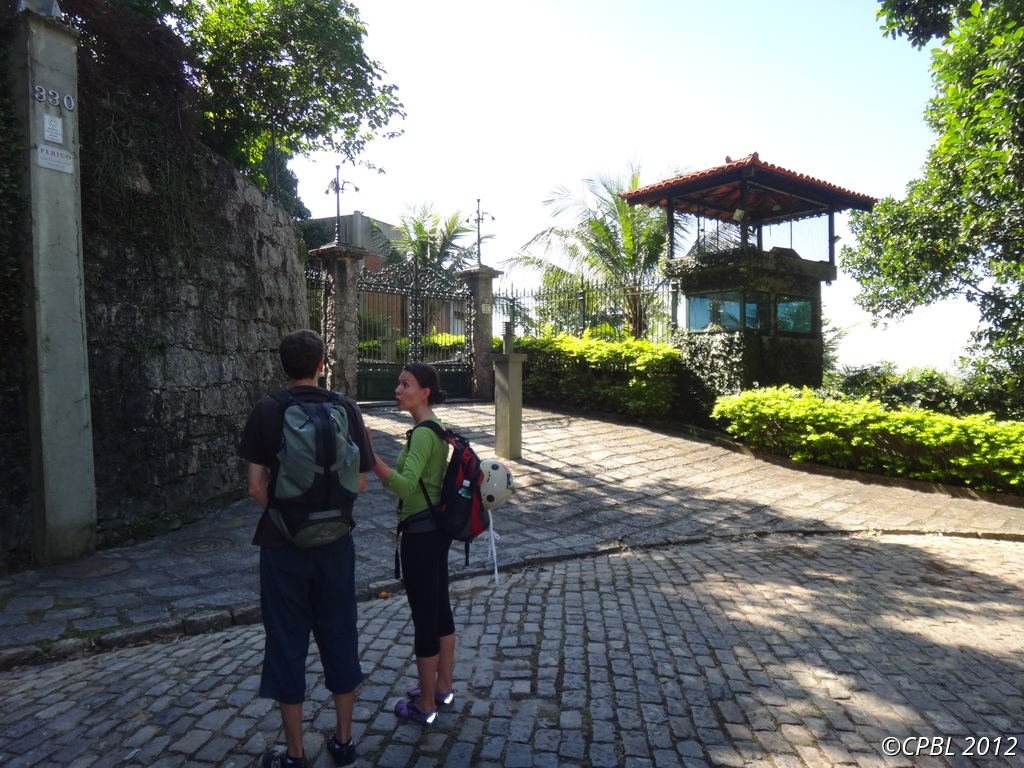
| | Walking up the cobbled lanes brought us past one estate guarded by high walls, extensive razor wire, dogs, a guard tower, and who knows what else. |
|
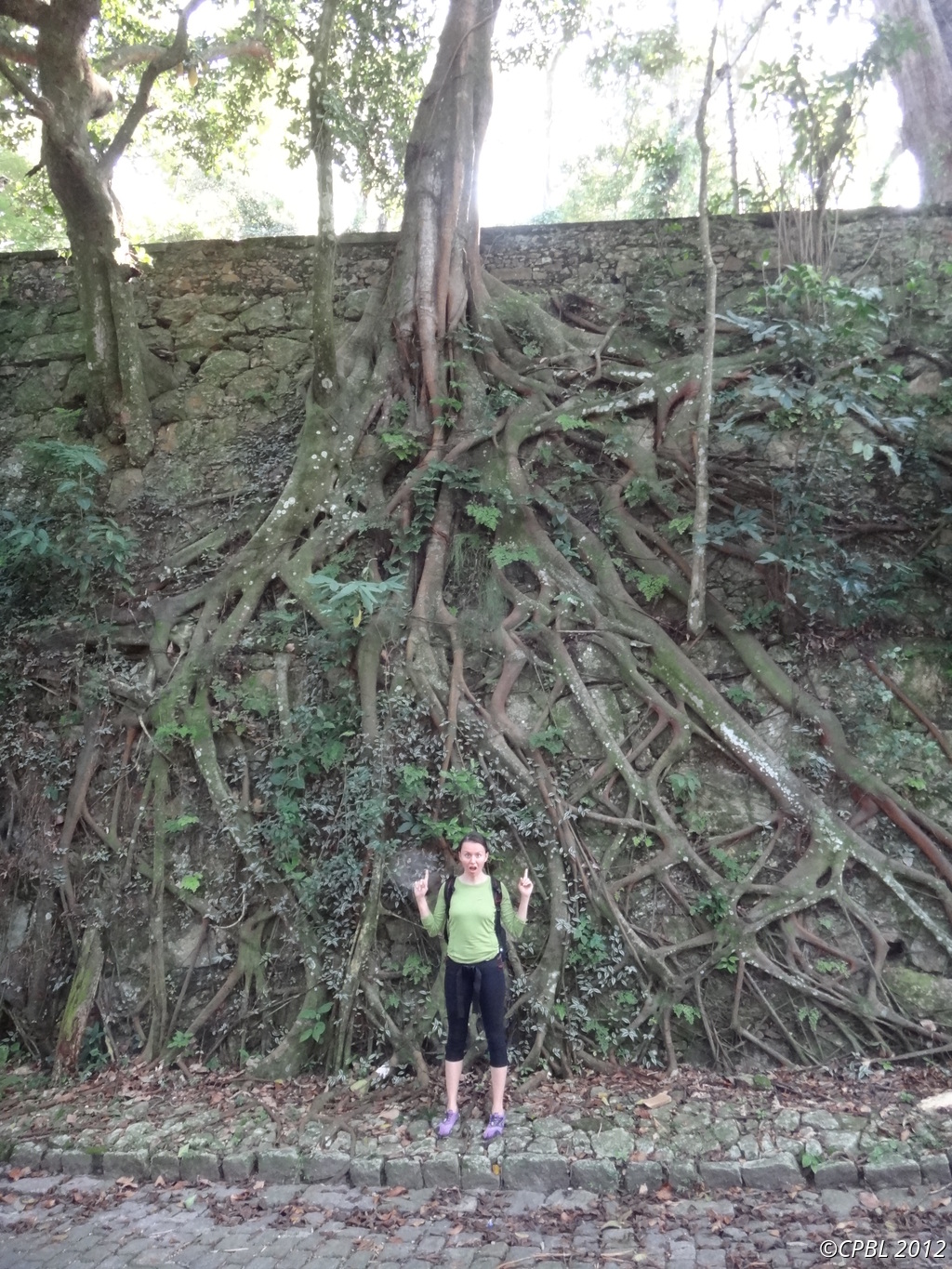
| | Where did this tree start growing? |
|
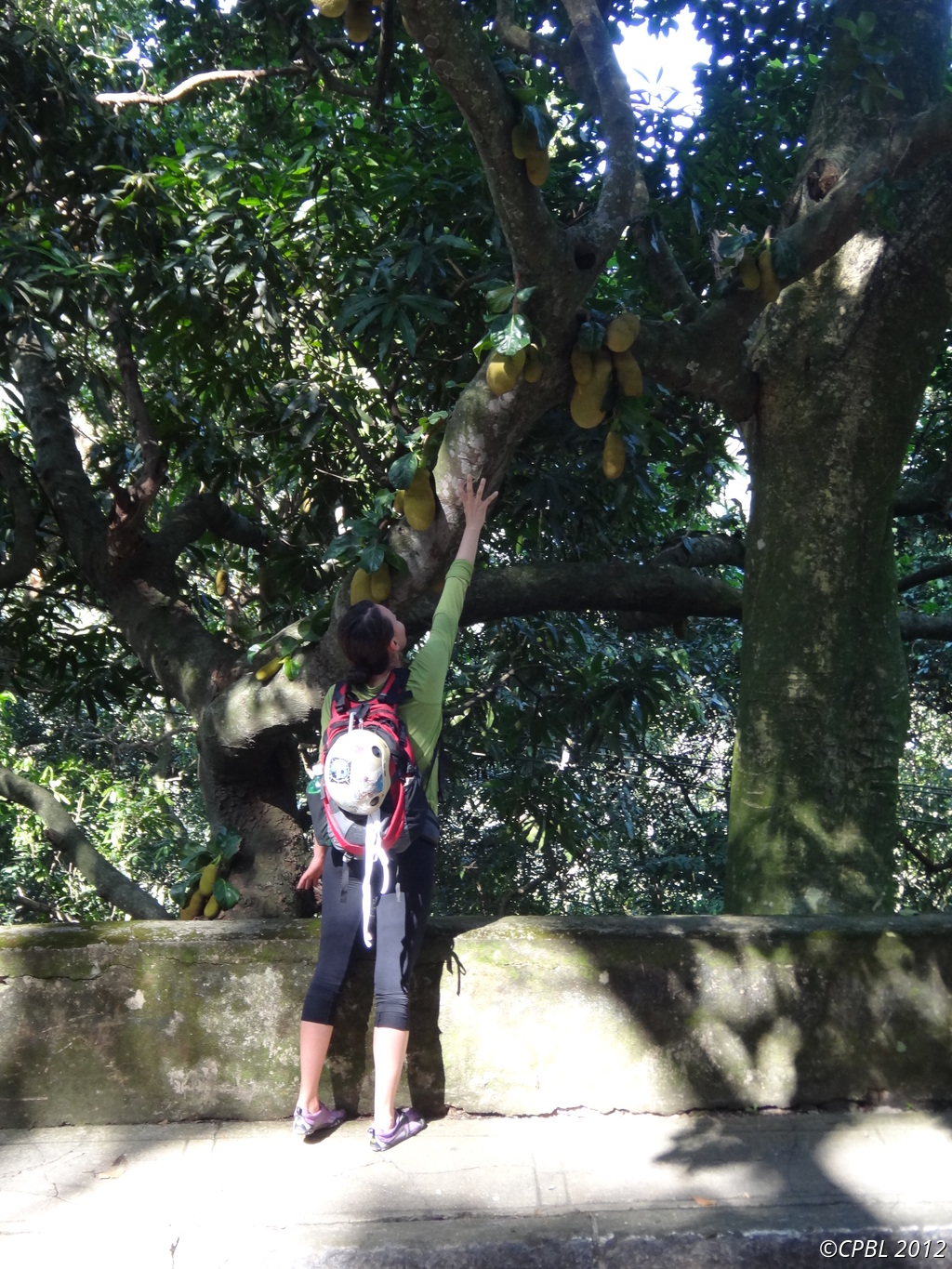
| | Here's its neighbour's top. It's a jack fruit tree. |
|
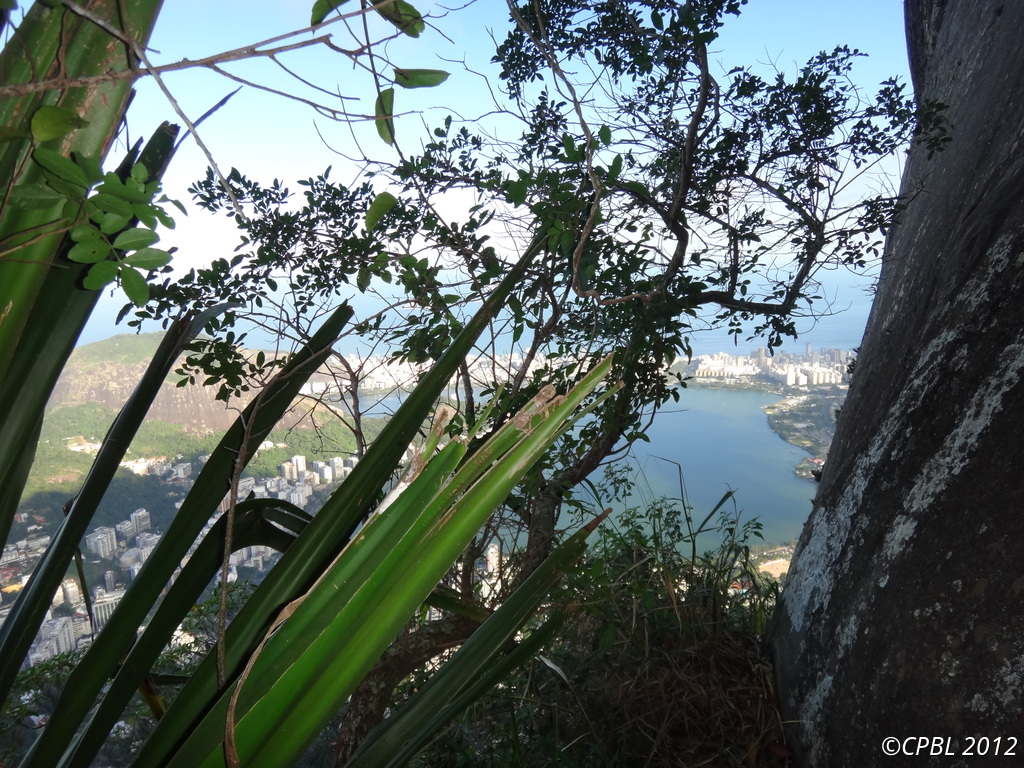
| | The oddly-named K2 route sneaks onto the face below the Redeemer statue from a little perch with this view. |
|
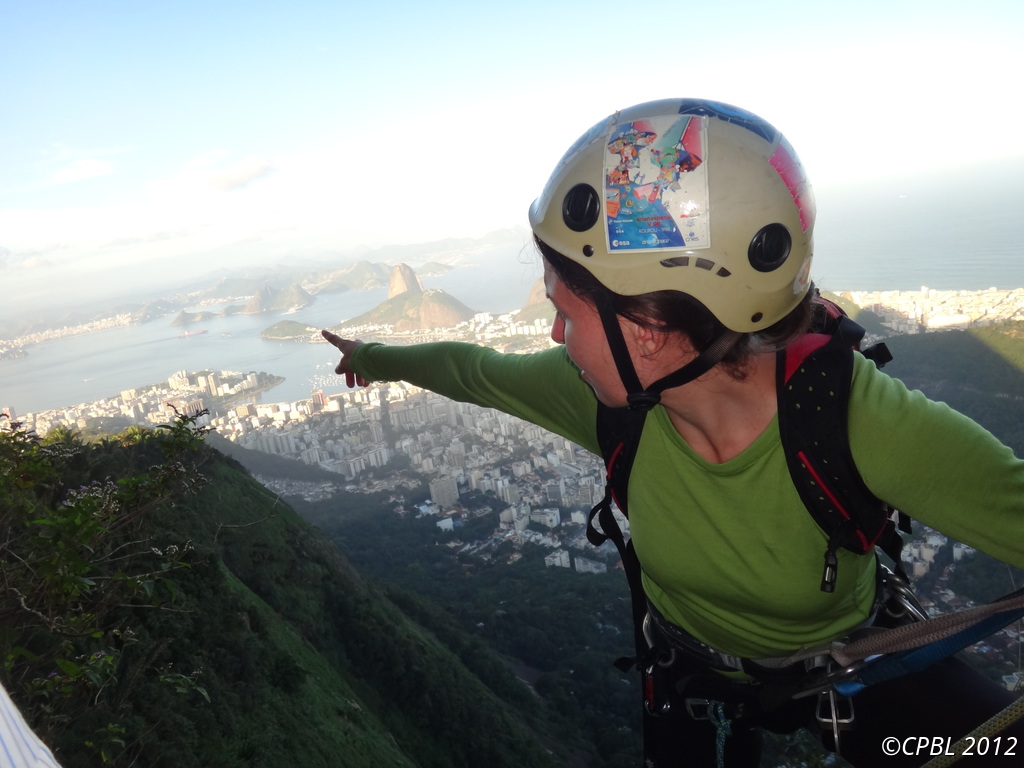
| | Aleksa is fascinated by Niterói, Brazil's richest city, across the strait beyond the Sugarloaf. |
|

| | After our approach and one pitch, the shadow of the Cristo Redentor was already long. [Photo: Aleksandra Nasteska] |
|
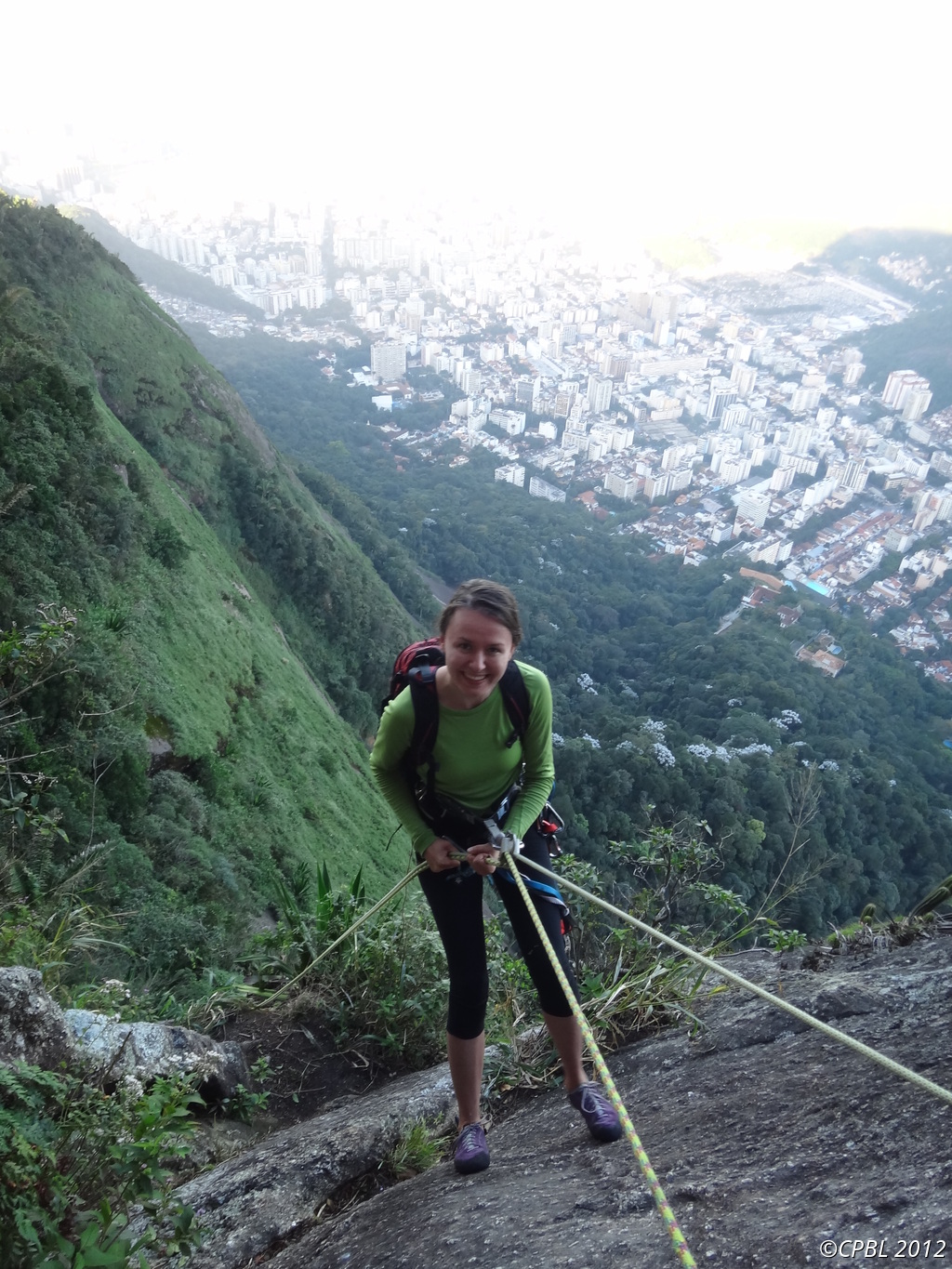
| | So we descended. |
|
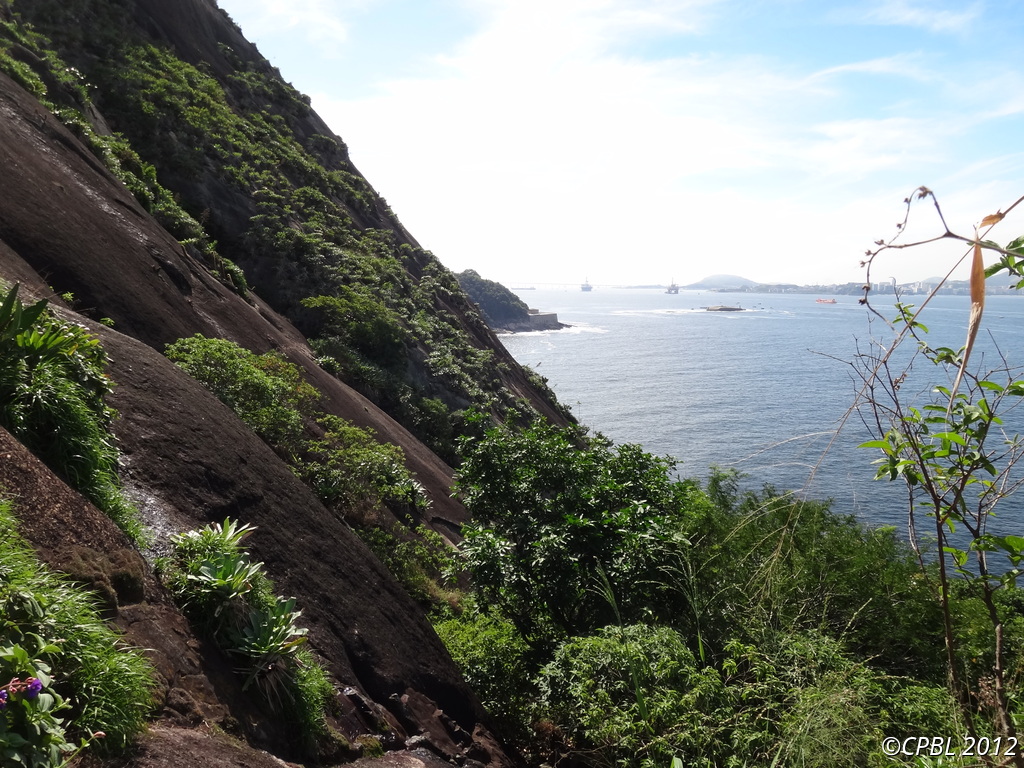
| | The next day found us back on the Sugarloaf, this time heading for a long and easy route on the east face. Walking around the back side, with one short rap, gets you to the start. |
|

| | Aleksa, you're rapping in flip-flops? Is that a Brazilian practice? |
|
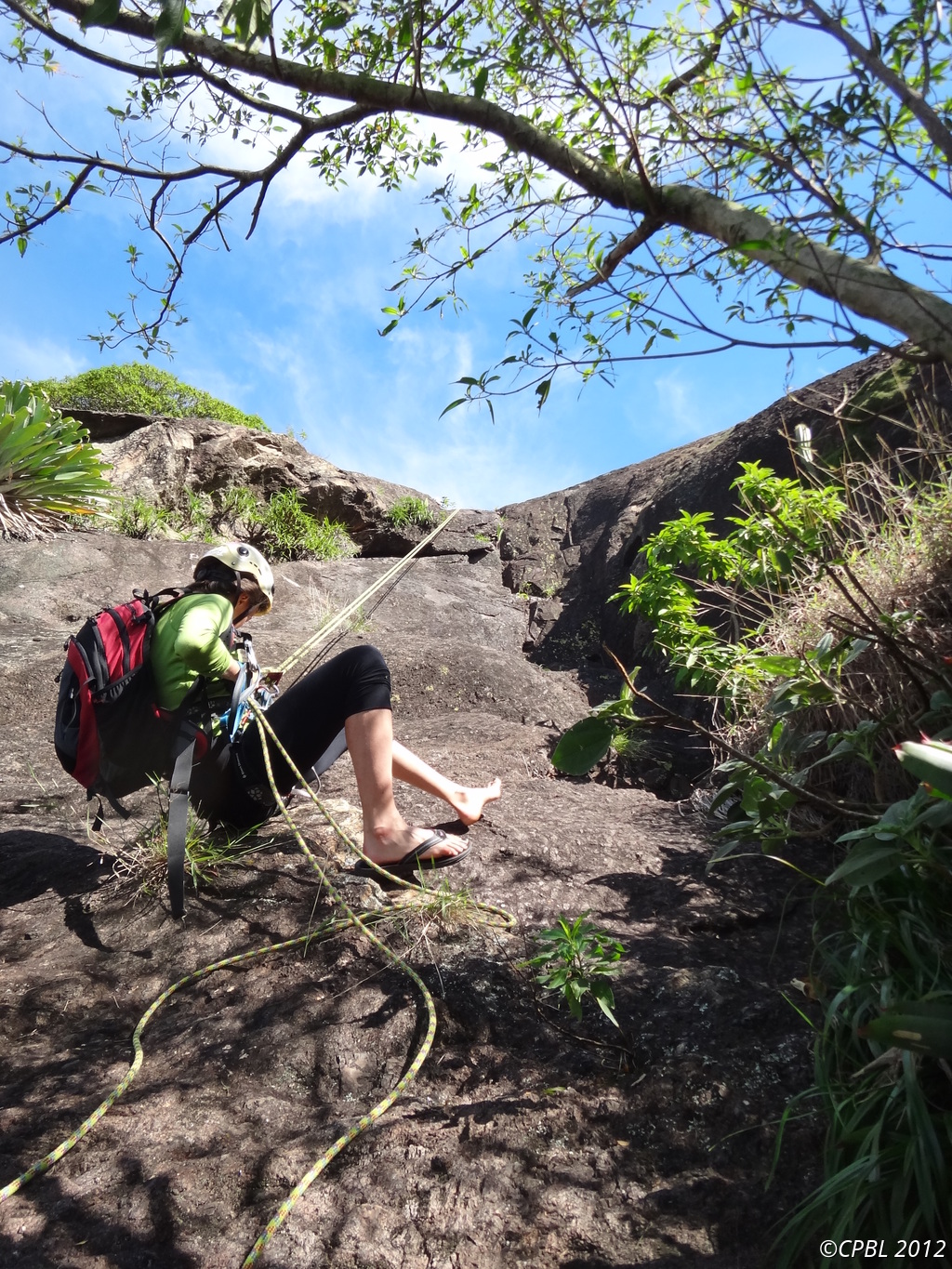
| | It didn't work out too well. |
|
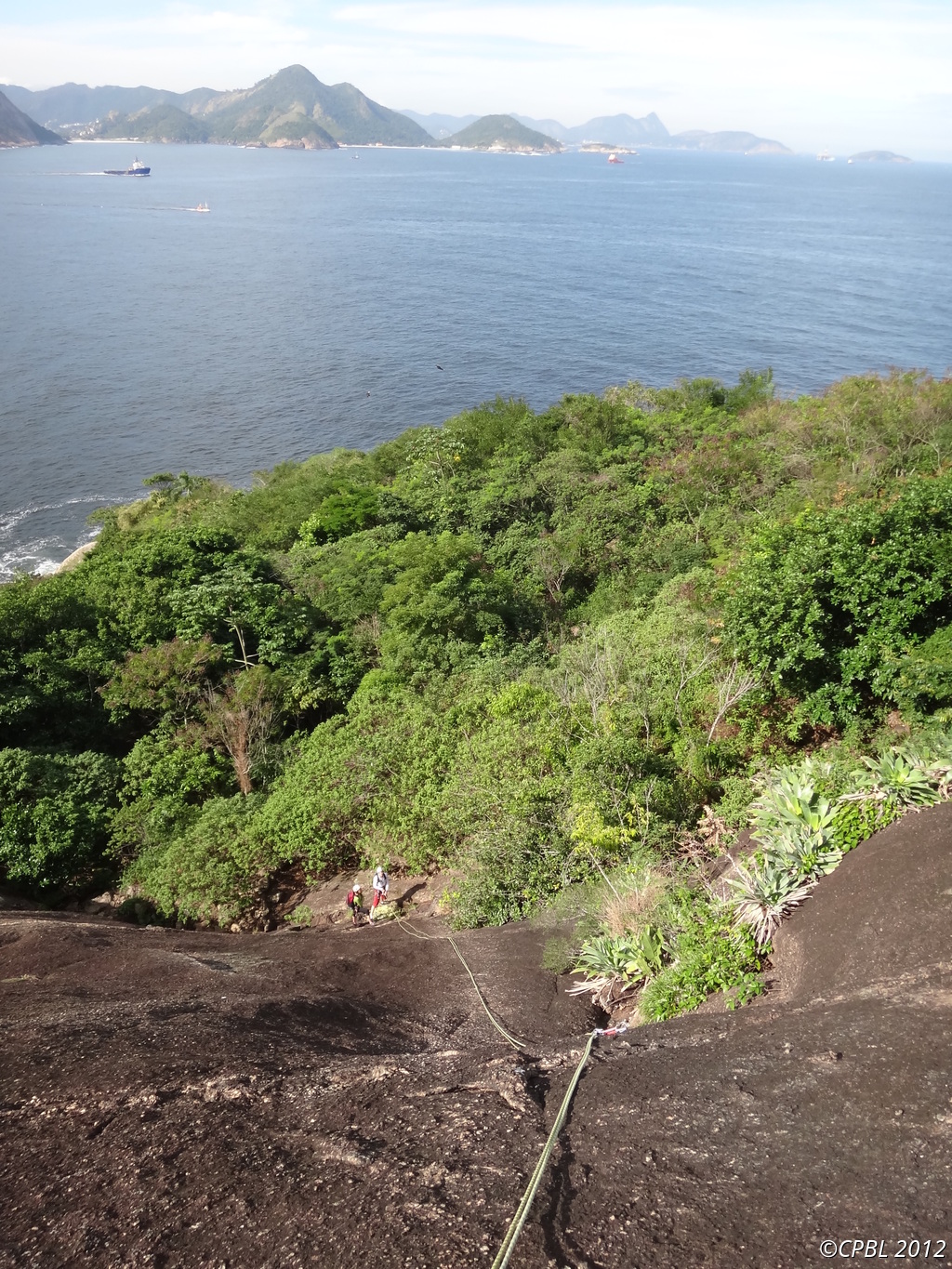
| | Some of the first pitch. Low on the route, you get a couple of pieces of protection (fixed) per pitch. |
|

| | The route is all crystal-climbing on slab. Lower on the route, the crystals don't break off. |
|
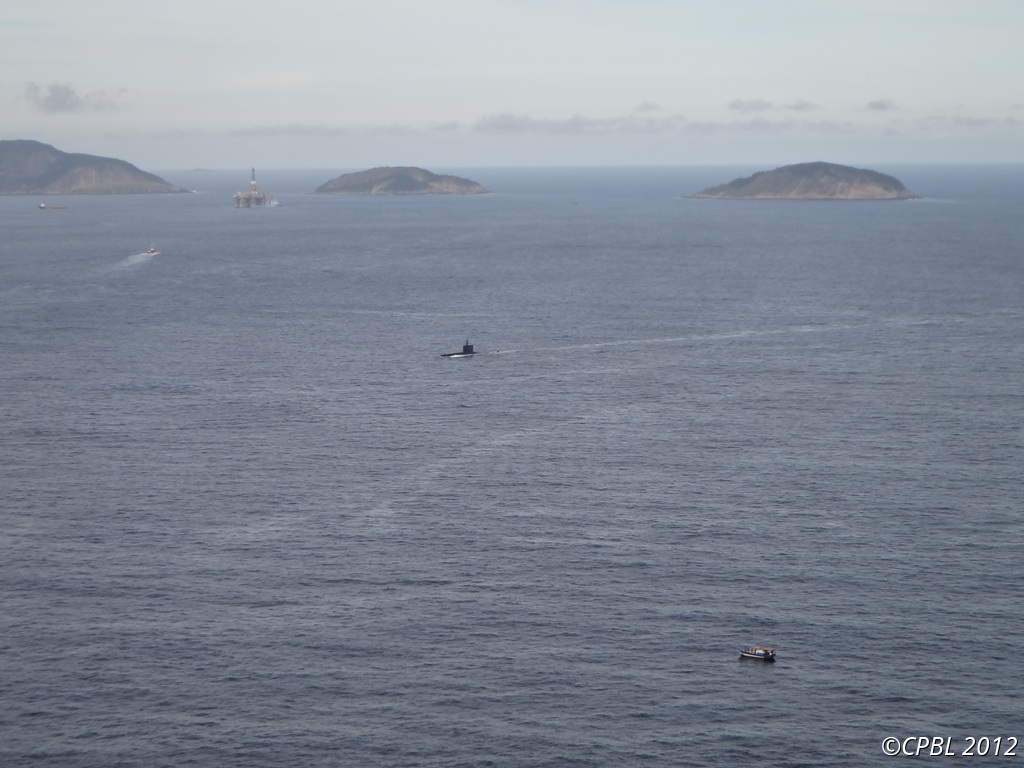
| | We saw a submarine under weigh. |
|

| | Aleksa, getting mugged while dodging cacti. |
|

| | Type I fun? |
|
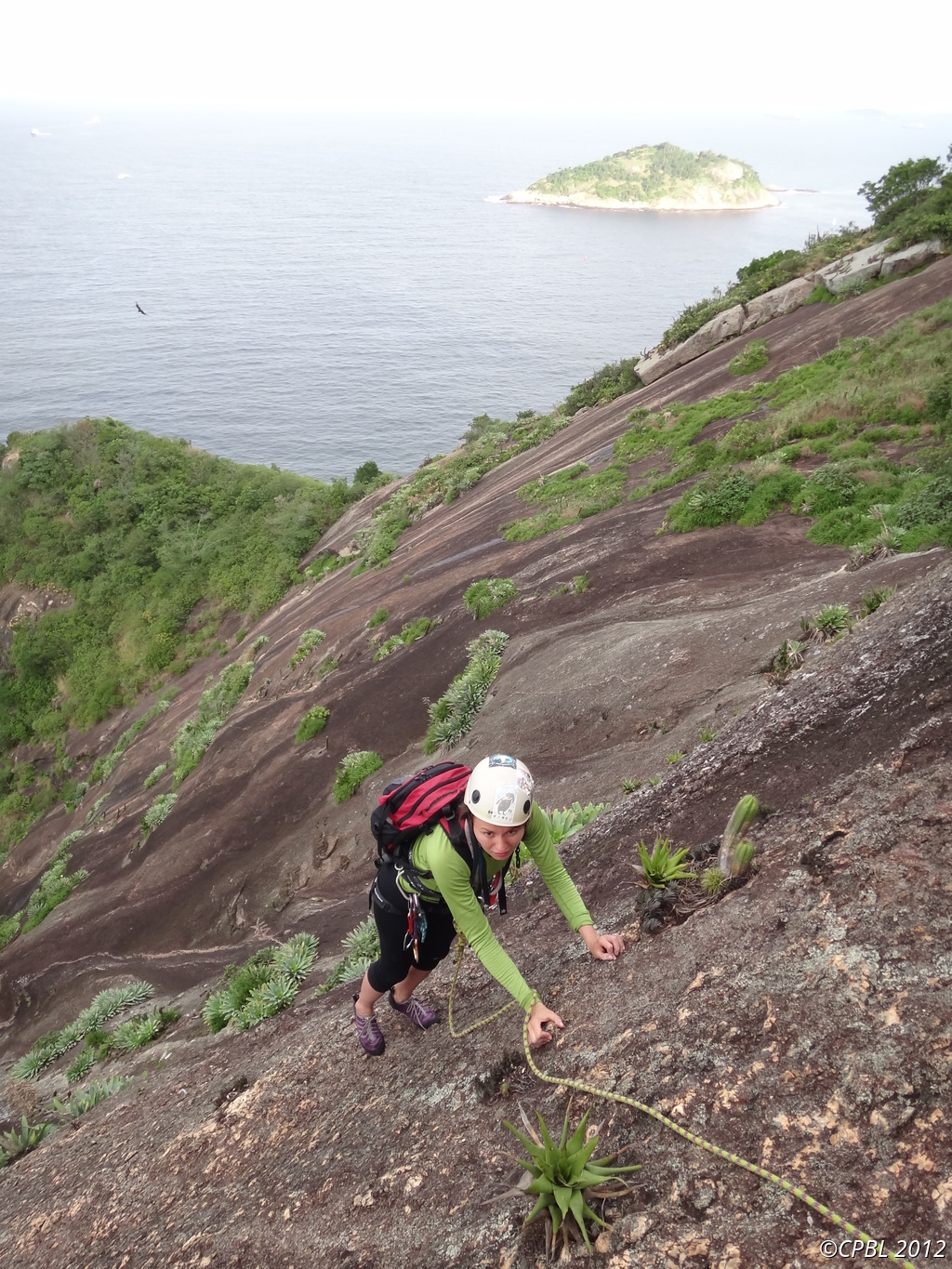
| | The setting is always stunning. |
|

| | After this point, the protection thins out a bit more ... to one every 1.5 pitches. Yes, we ended up tying two 60m ropes together, with the belayer passing the knot, to reach the next bolt. |
|

| | At least it's not steep. The local standard may be just to 3rd-class this grade. |
|

| | One can often see dozens of vultures circling overhead at once. |
|
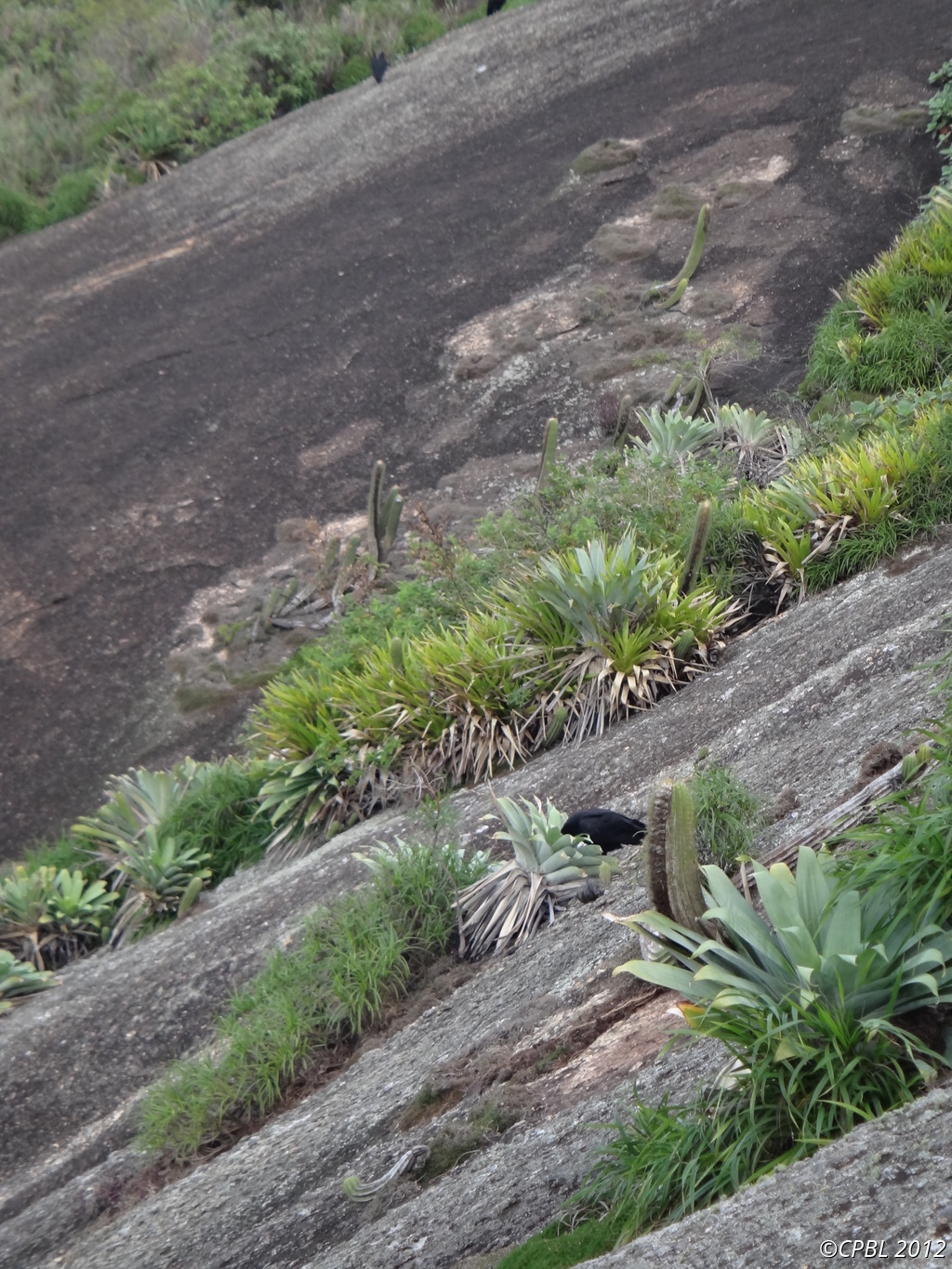
| | Yuccas hold water for them to drink. |
|
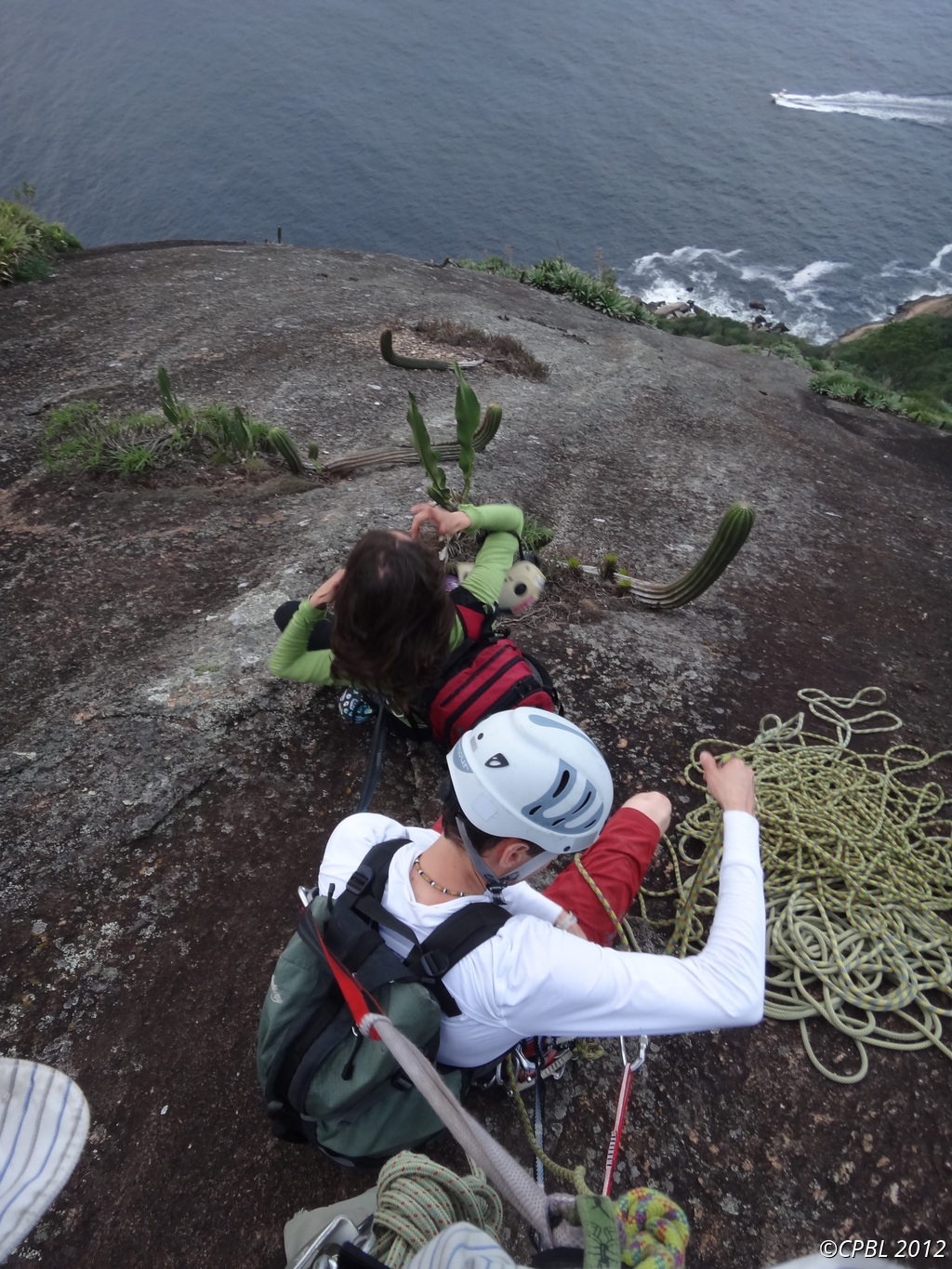
| | The sun was shortly off to visit Asia, and there was no protection anyway (sling the occasional cactus?), so it was time to pack up the ropes. |
|
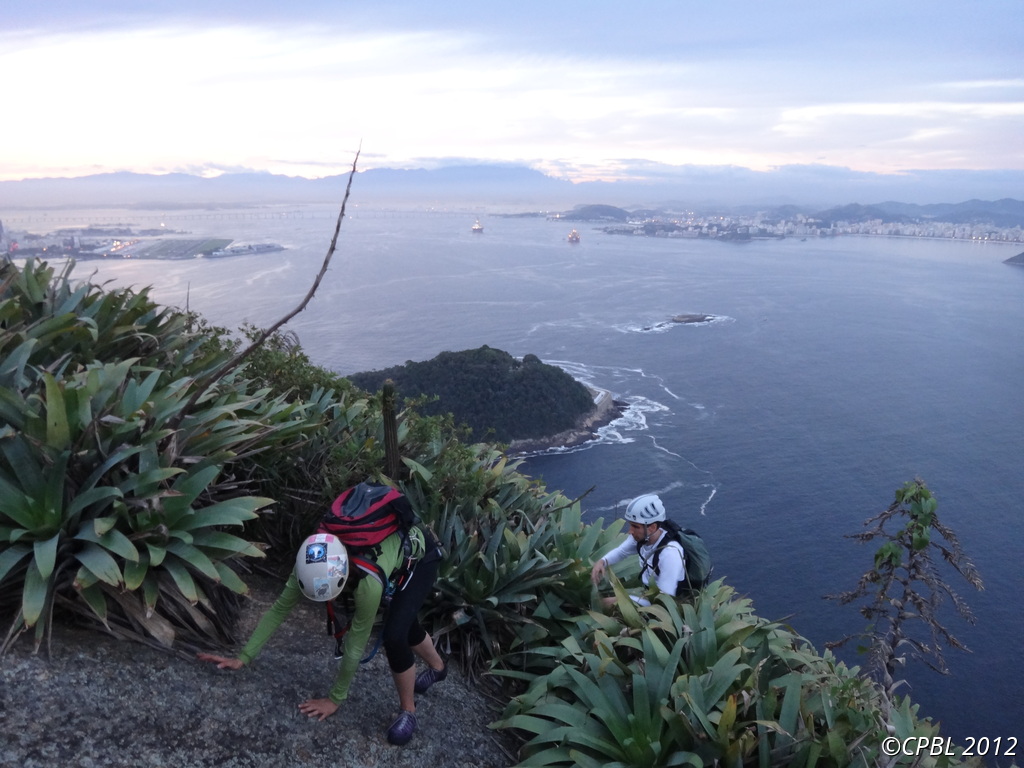
| | That meant alternating jungle and slab. |
|
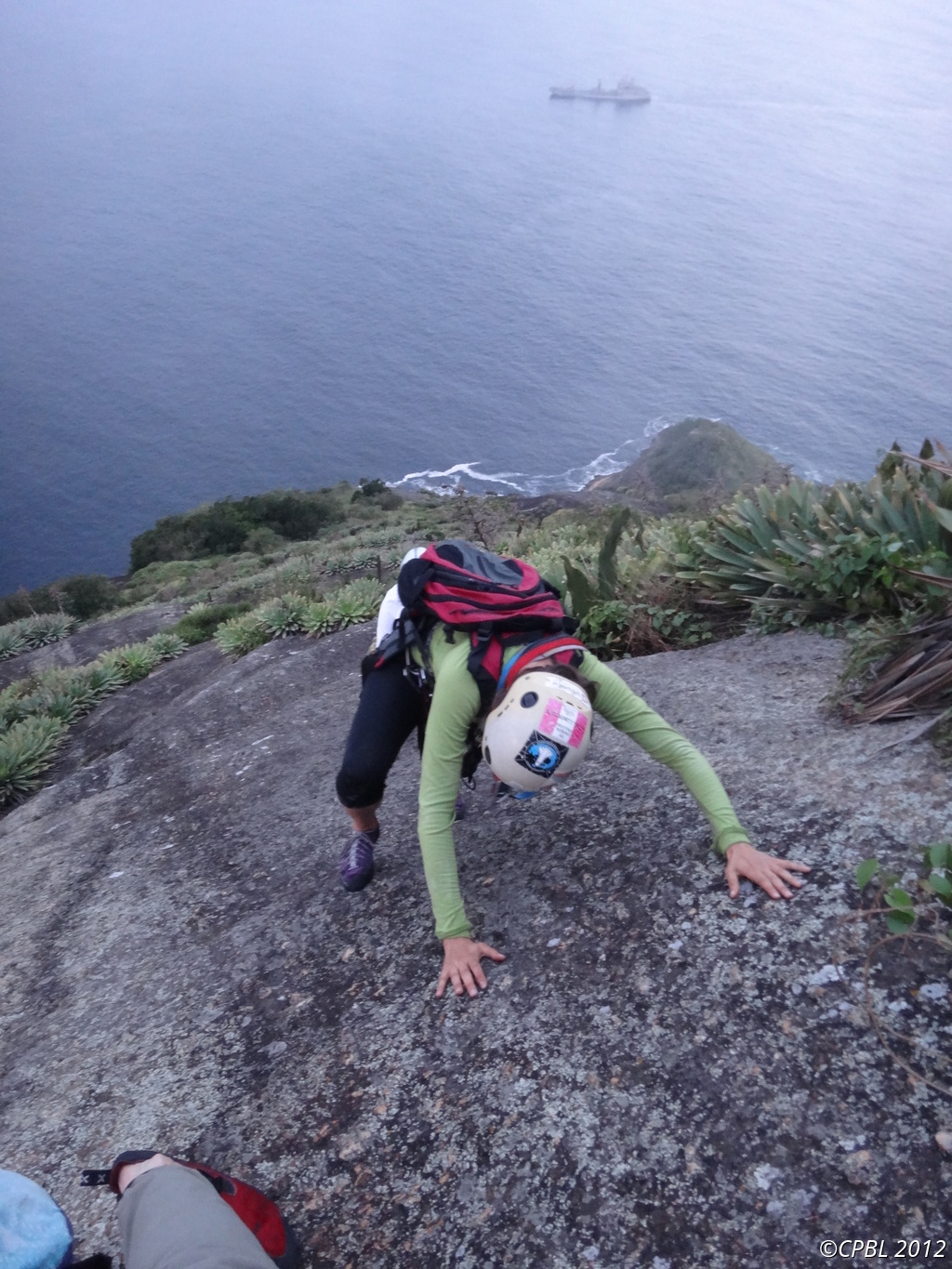
| | You can't see Aleksa's face here, but I assure you she considered this only Type II fun. |
|
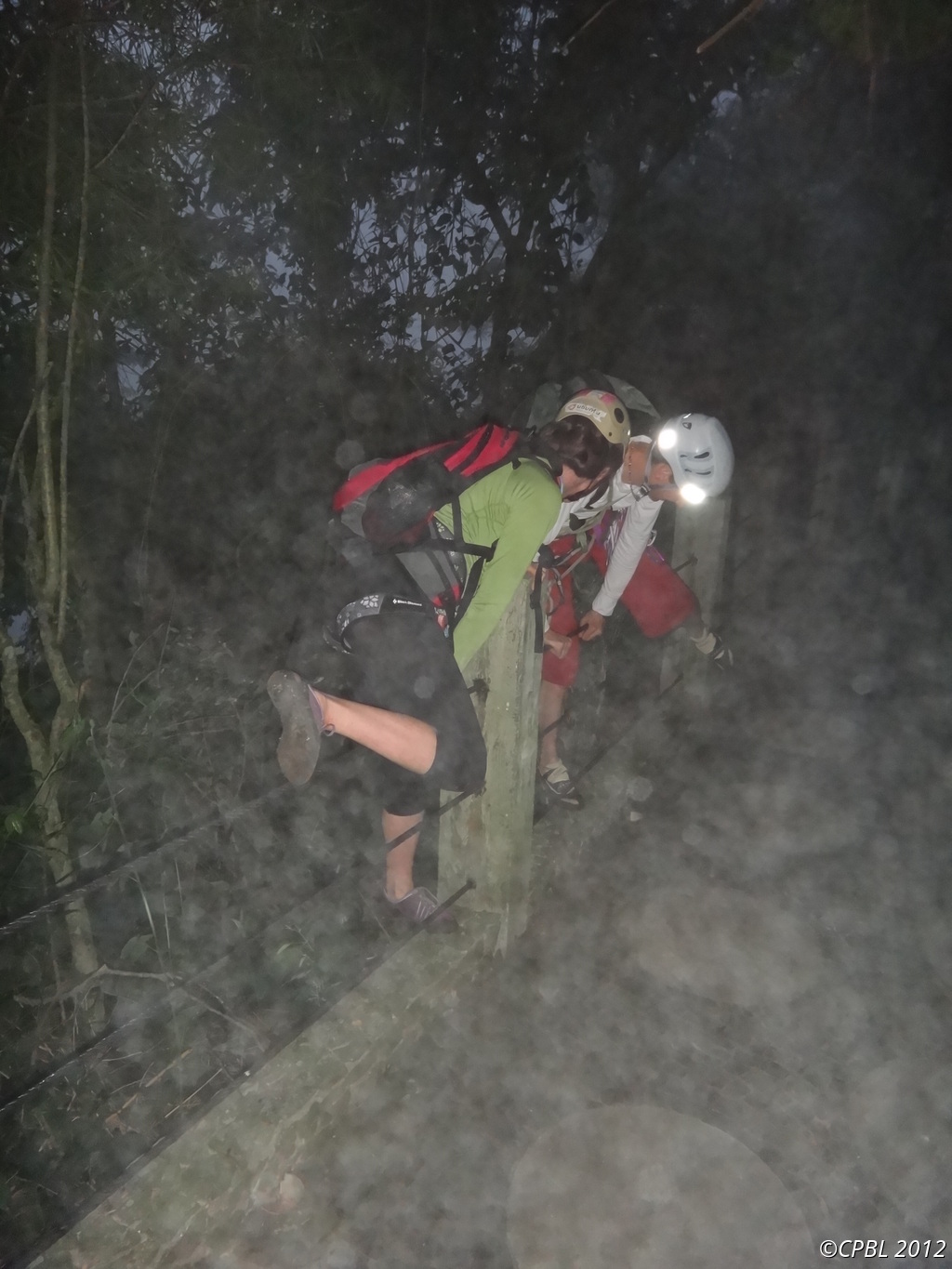
| | Then there was some veritable jungle-crawling (the cactus was relatively gentle) before reaching civilization ... |
|

| | i.e., ice cream followed by free teleferico rides down to bus-land. |
|
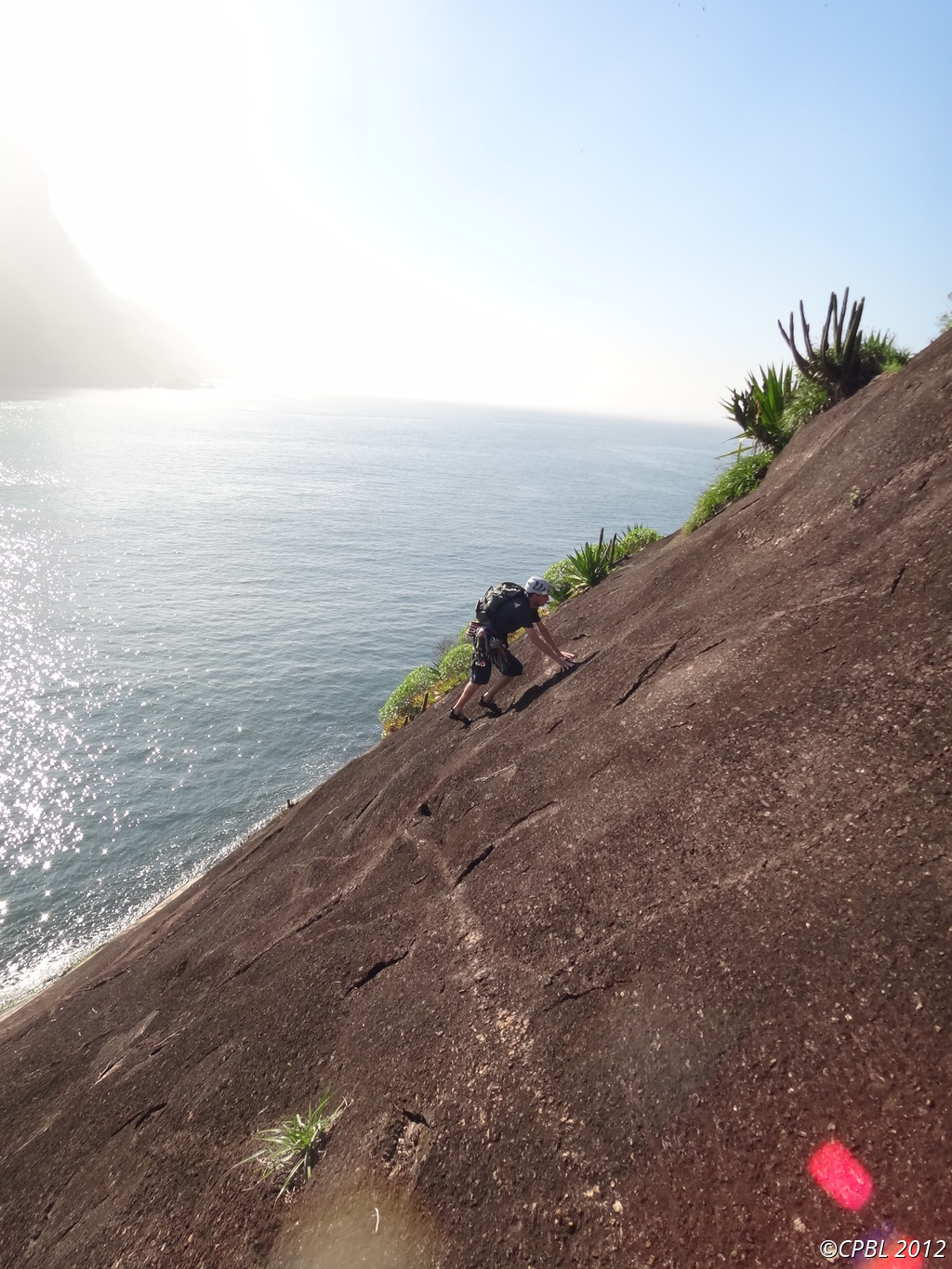
| | The next day, Emmanuel and I scrambled up a slab |
|

| | to the sport cliff on Babilônia wall, |
|
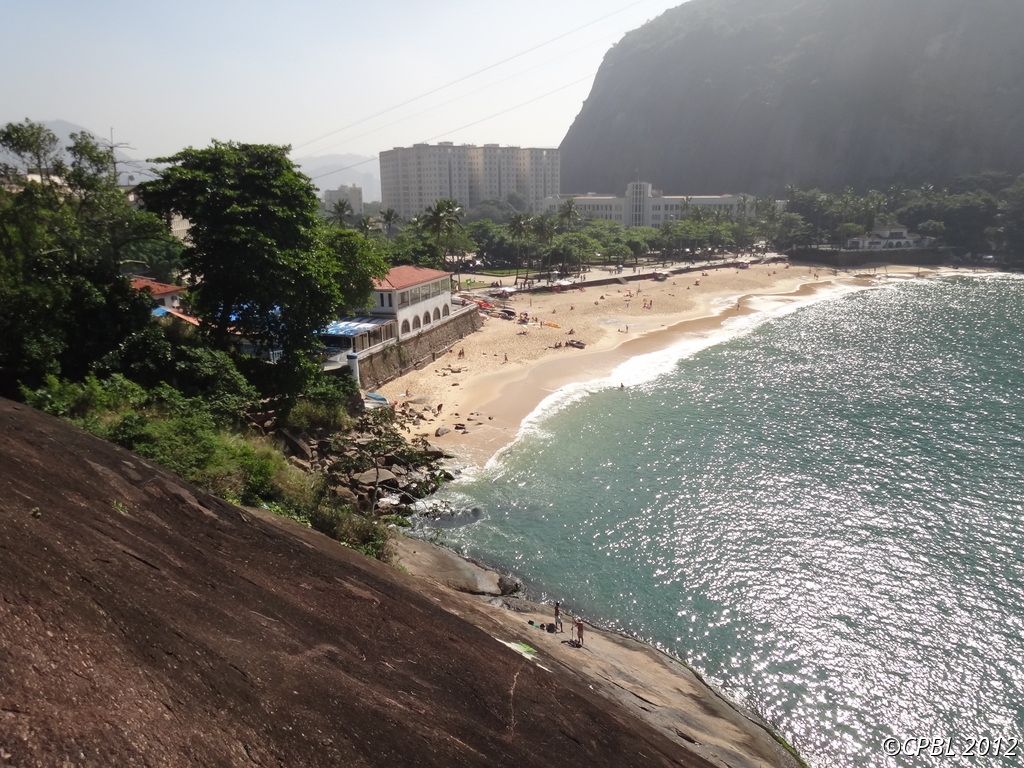
| | which is just across some water from the Sugarloaf. |
|
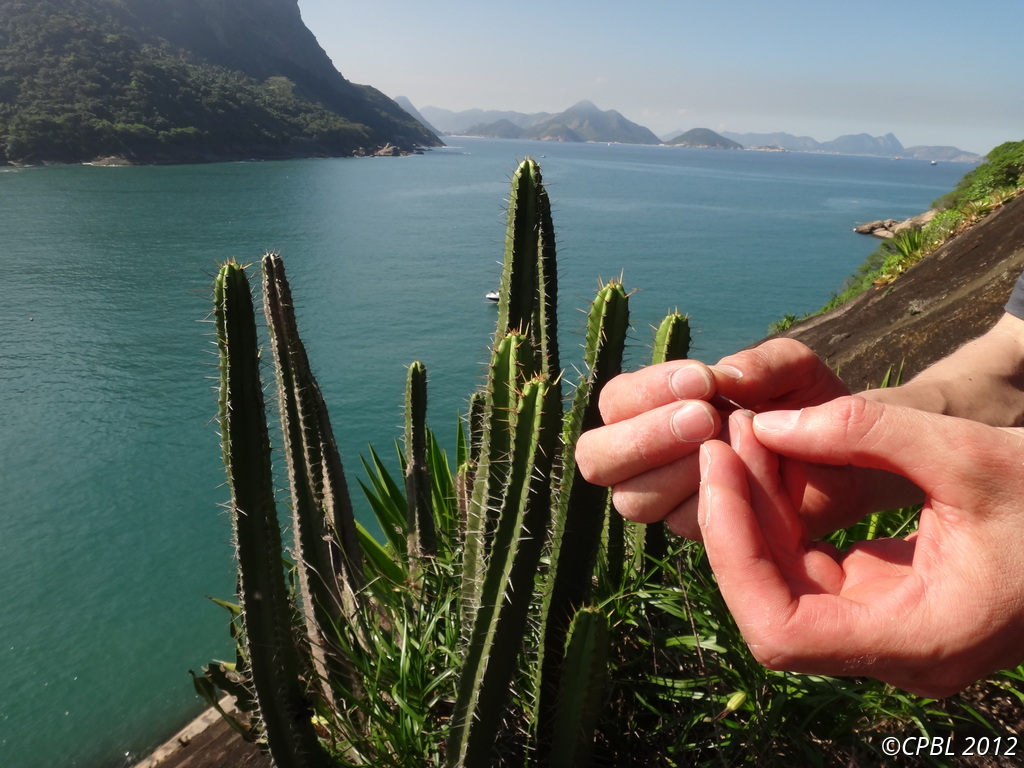
| | There was (not shown) some good steep climbing (and interesting insects) but once again, rather poor protection ("E2" protection rating is already very run out). By the way, if you end up with a blood blister from slipping on a sharp crimper, it can be easily drained with a cactus spine. |
|

| | Our final climbing effort was a return to the K2 route on Corcovado, repeating the first pitch |
|
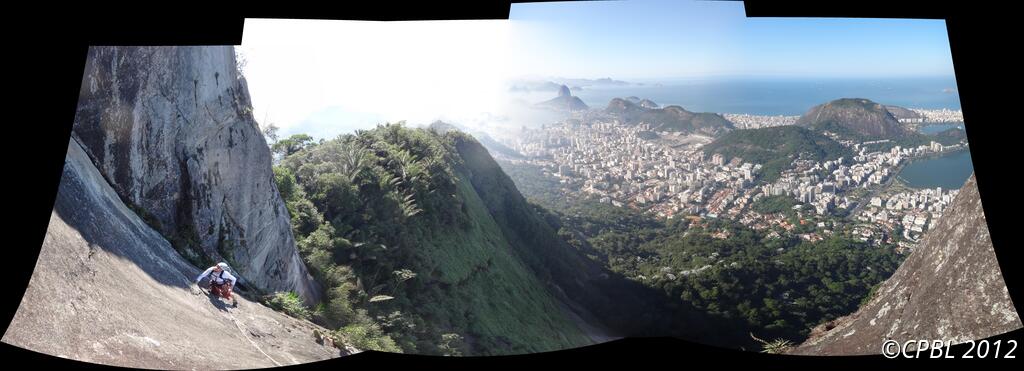
| | and linking it to the second. |
|

| | Emmanuel led the next, with stunning position, |
|
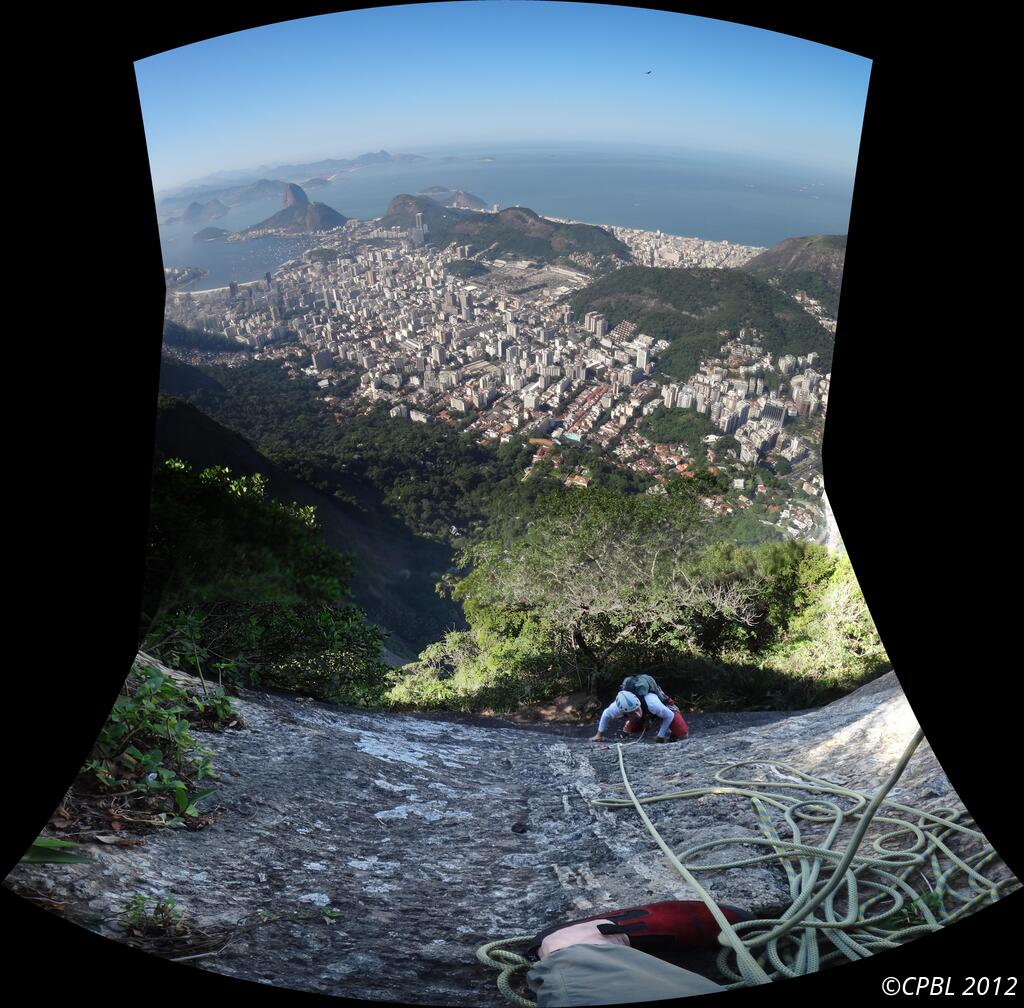
| | and I linked the final two. The last pitch is a face augmented with cement drips from the construction of the massive reinforcements above. In the background appears the Urca area (including the Sugarloaf), where we did the rest of our climbing. |
|
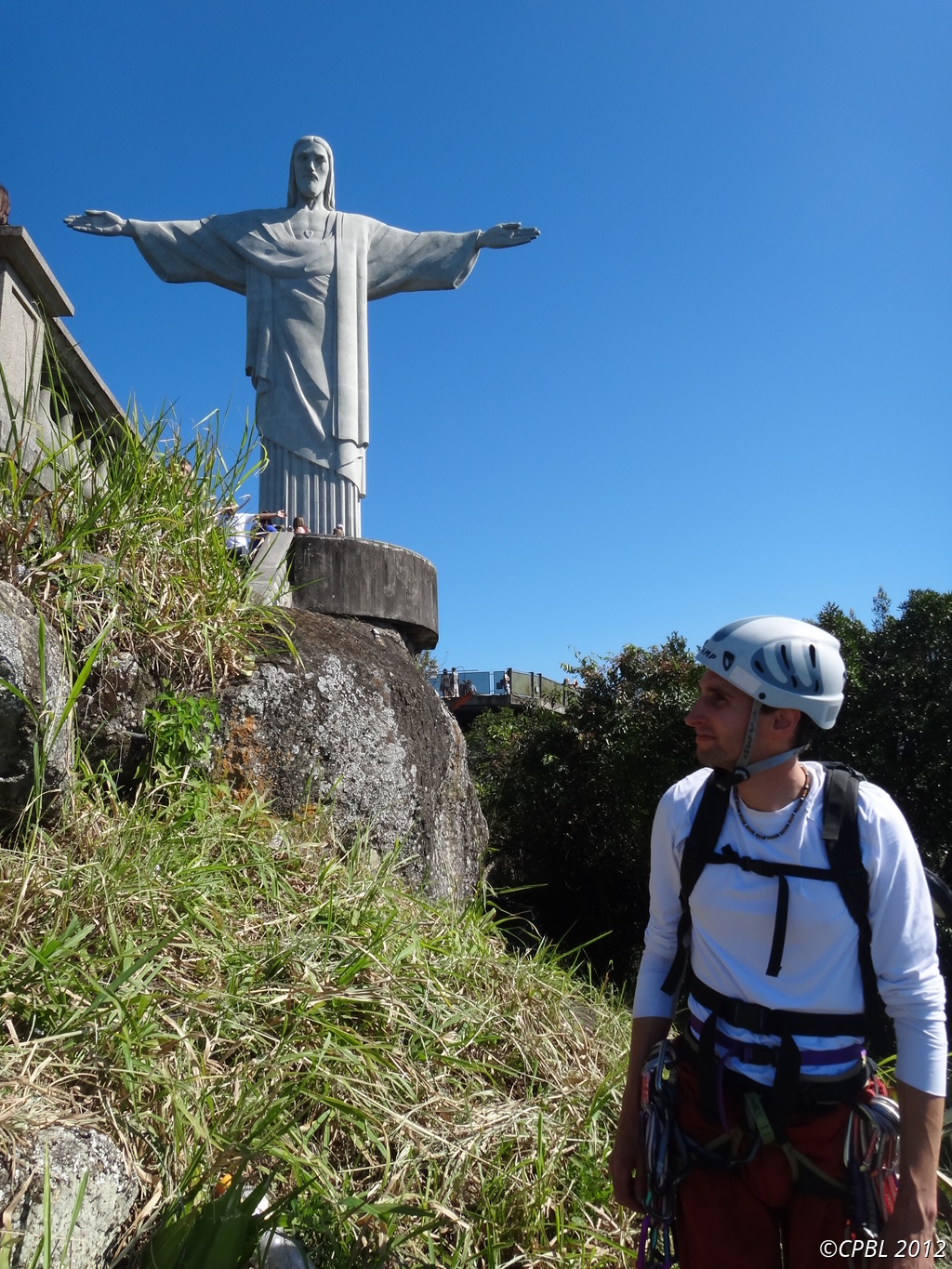
| | That effort got us here, |
|
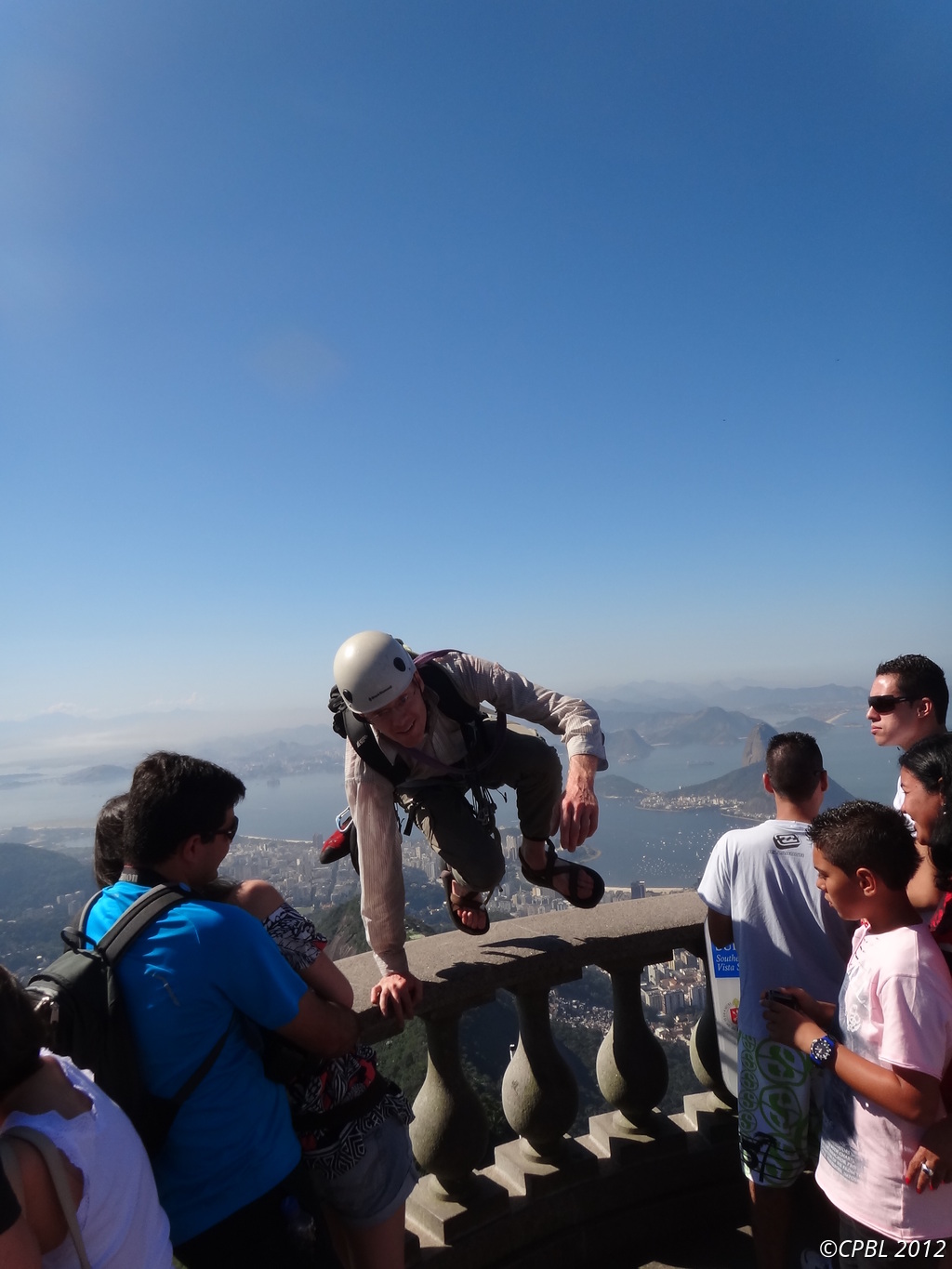
| | into tourist land (they throw a lot of garbage over that railing). But that's another subject. [Photo: Emmanuel Prinet] |
|

| | Where's Waldo? [Photo: Emmanuel Prinet] |
|





